

FOR





Substrate (Solid Aluminium Panel, ACP, Acrylic Sheets & More)
Display Equipment (A-boards, Roller banner & more)
Rigid Boards (Internal foam board, PVC & more)
Digital Media (One-way vision, roller banner material & more)
LED Lights (Neon-flex, Strip lights & more) & More
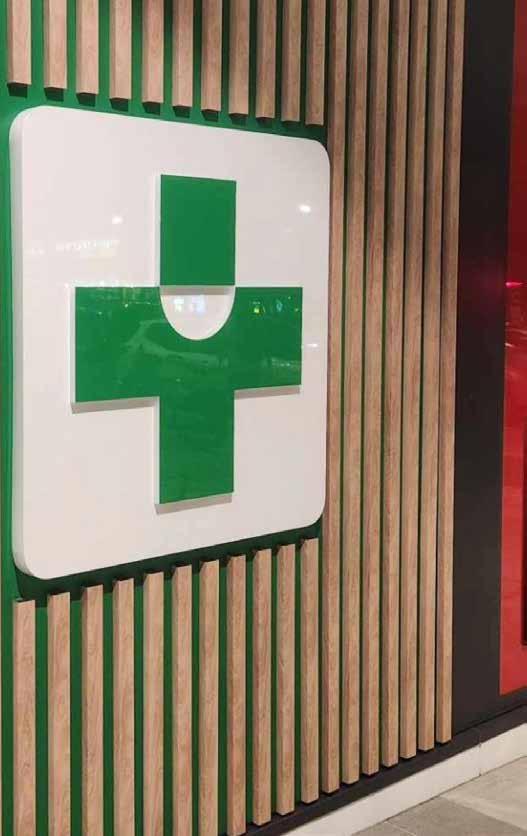





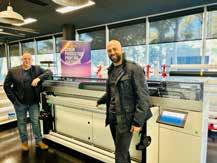
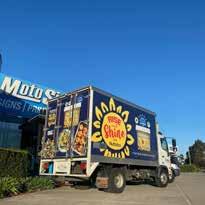

publisher
Image Publications Pty Ltd
ACN 056 489 699
PO BOX 613, Brighton
South Australia 5048
T > +61 1300 001 393
E > info@imagemagazine.com.au
W> www.imagemagazine.com.au
editor
Stephanie Gaddin
T > +61 449 775 494
E > editor@imagemagazine.com.au
advertising
Janet Maitland (Publisher)
T > +61 1300 001 393
E > info@imagemagazine.com.au


Welcome to the August issue of Digital Image Magazine. July saw Visual Impact return to Brisbane and it did not disappoint, with a 20% increase in attendance over the last show which was held in 2018. In this issue, we bring you all the highlights from the show, including all the latest new product launches fresh off the back of FESPA and drupa earlier this year, and the latest applications that are shaping our industry.
During Visual Impact, FESPA Australia held an open house at SS Signs, one of Australia’s leading signage companies. SS Signs has taken its signage production capabilities to a new level by investing in a stunning new purpose-built head office production facility in Cleveland, Queensland. With workflow and automation, a focus, they have also recently installed Australia’s first Digitech TruFire LTX2 flatbed printer. Don’t miss page 29 of this issue where Steve Lambourne, owner of SS Signs, shares his journey so far in an exclusive interview with Digital Image Magazine.
With 2030 looming and with government led recycling initiatives in place for the packaging and textiles industries it seems only a matter of time before our wide format and signage industry is impacted as part of the broader
manufacturing sector. Recognising this trend, our Publisher, Janet Maitland, who has been in the industry since 2005, recently conducted a “study tour” in Europe. Her goal was to investigate existing legislation and best practices in the European wide format and signage sector. The aim being to provide valuable insights on practical steps that local industry leaders can take to prepare for and adapt to these impending changes. As part of Janet’s findings, this month we are proud to present a Special Feature: Sustainability Spotlight - Recycling wide format and signage waste – Have we reached the tipping point? which you will find on page 16.
As always, we love to hear and share your stories so please reach out to us at editor@imagemagazine.com.au To stay up to date with the latest industry news and events, visit imagemagazine.com.au, register for our weekly newsletter including our industry leading classifieds, and make sure to follow us and tag us @imagemaganz on social media. We look forward to connecting with you and seeing you at upcoming eventss.
Warm regards,
Stephanie

oOh!media is launching a trial to assess the impact of reduced energy consumption across its large format digital network as part of an ongoing commitment to lead the Out of Home industry to a more sustainable future.
The first phase will see a black out of 70 large format LED sites across Australia between 1am to 4am each day for a period of six months. It follows an initial month-long test at one of oOh!’s sites in Sydney’s inner west, which showed an estimated energy saving of 6% if the site was blacked out during these hours.
“We are continually exploring ways to advance
our sustainability agenda through innovation. This large format digital trial, the first of its scale for oOh!, will provide valuable insights and learnings on how we can transition the digital network to reduced and renewable power sources,” says Sarah Young, Group Director of Environmental, Social and Governance (ESG) at oOh!.
While oOh! is accelerating its move towards renewable energy, the company is also reducing power consumption by investing in LED technology, which enables sites to consume less power when blacked out.
oOh! will bring additional sites into the program
Spicers has announced an exclusive Hahnemühle Digital Fine Art range distribution agreement.
Ken Booth, General Manager - Product & Marketing at Spicers, says, “This significant partnership is a testament to our unwavering commitment to providing the highest quality products to our customers and elevating our offerings to the next level.”
Booth adds, “We are particularly excited to bring the Hahnemühle sustainable range to the Australian market, which includes the innovative Hahnemühle Sustainable Photo Satin and the exceptional Hahnemühle Photo Silk Baryta X. The Sustainable Photo Satin is a groundbreaking alternative to traditional PE-based inkjet photo papers, featuring a new bio inkjet coating that is free of plastic composites and 100% recyclable through the wastepaper cycle. Its bright white, velvety smooth surface is ideal for sustainable photo and poster printing.
“The Photo Silk Baryta X, with its cellulose base and optimised inkjet coating, offers a traditional silver halide photo paper feel. This smooth, creamy white paper with a silky gloss finish ensures outstanding print quality for both photo and poster prints, making it perfect for daily use.
over time, and money saved on electricity will be reinvested into oOh!’s transition to renewable energy across the network.
MOVE 1.5 data shows a minimal audience reach of 1% to 2% between the hours of 1am and 4am and oOh! clients will be unable to book these trial sites during the power down hours.
“This initiative is a key part of our broader ESG strategy and reinforces our commitment to creating a more sustainable business. We are excited to see the outcomes of this trial and its potential impacts,” concludes Young.

“The introduction of these new products is yet another reason why our partnership with Hahnemühle is perfect. Spicers is dedicated to sourcing products from manufacturers and suppliers committed to smart and greener practices. We are delighted to be the Australian distributor for Hahnemühle and to deepen our commitment to this esteemed partnership. Together, we will continue to set new standards in digital fine art and sustainable printing solutions,” concludes Booth.

swissQprint showcased an automation option at drupa 2024, designed to maintain high productivity in flatbed printing by relieving operators of unloading tasks.
The new automation module removes processed media up to 3.2×2 metres from the flatbed printer’s table, streamlining the handling of large runs. Loading would continue to be done by hand.
swissQprint gathered initial customer feedback as part of the development process. “drupa is the perfect opportunity to show the conceptual study and collect broad-based feedback that will go into final development,”
explains Carmen Eicher, Chief of Sales and Marketing Officer at swissQprint. Once tailored to market needs, the finished product is expected to be available in 2025.
Phil Trumble, Managing Director Pozitive Sign & Graphics Supplies, demonstrated the product to Image Magazine, explaining, “People who buy a swissQprint machine love the fact that its flexible. You can print tandem, front and back of the table, you can print full sheets, small sheets, etc. However, we also have clients that have bigger runs and higher production volumes. As the machines have become faster the more automation has become a focus for swissQprint because the faster the machine
prints, the more human interaction is required for unloading and loading the sheets.
“SwissQprint has developed this unloading option to enhance productivity. The idea is that the machine will unload the sheets for you, so the operator is still manually loading the sheets on to the onto the table, but they are no longer having to also remove the sheets. This means that you only need to have one operator just feeding the machine constantly as the sheets are being unloaded automatically. Also the automation module is an option and can be added at any time, it can also be docked when not in use,” concludes Phil.
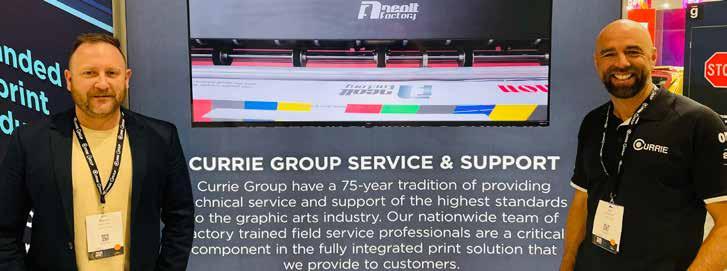
Currie Group has partnered with Italian finishing manufacturer Neolt Factory at Visual Impact. Neolt Factory will supply a range of loading, unloading and finishing systems for the Canon Colorado M-Series printer range.
Currie Group will be the exclusive agent in the ANZ region for the Neolt Wallpaper Factory solutions. These include ‘jumbo roll in – jumbo roll out’ systems, which increase the capacity for long run lengths of products like wallpaper without operator intervention, and jumbo roll-to-cut solutions, which allow rolls to be converted automatically straight off the printer.
Paul Whitehead, Currie Group Business Unit Manager – Sign & Display, says the Neolt
Wallpaper Factory will deliver huge advantages, particularly for businesses doing large runs of wallpapers or similar products or multiple smaller runs of wallpapers or trimmings that require post-production finishing.
“The benefits of automation are wellestablished,” Paul points out. “Higher productivity is an obvious advantage, but importantly this can be achieved more profitably and while maximising the value of your staff resources by removing touchpoints in the production process and making the entire end-to-end process simpler and more streamlined.
“The Neolt systems will allow Canon Colorado
M-series users to lift their productivity with no additional labour requirement by fully utilising the automated features of the printers and enabling longer unattended production runs as well as in-line converting.
“This is a particular advantage for businesses in markets like Australia and New Zealand where qualified staff are in short supply, and wages running at a premium,” he says.
Under the new agreement, Currie Group is the exclusive agent for the Neolt Wallpaper Factory product suite across New Zealand and Australia, where the company also supplies the Canon Colorado and Canon Arizona printer ranges.

The Mutoh stand featured the Australian debut of the XpertJet 1462UF following its release at FESPA last year.
Russell Cavenagh, Managing Director of Mutoh Australia, says, “Since its launch at FESPA in 2023, it’s been very well received by the Australian market with over ten units installed locally already.”
“It is perfectly suited for direct-to-object printing, which is a highmargin growth category. What we’re finding is that many clients already have a desktop flatbed. They’ve built volume, and they’re looking to grow their business. The XpertJet 1462UF enables them to offer a broader range of niche products to the customers they already deal with. Made in Japan; it prints on anything up to 150 mm thick, has staggered heads with CMYK white and varnish. It is a single pass machine and does everything in one go.”
Also on stand was the XpertJet 661UF UV-LED flatbed printer which includes a larger printable surface area, updated touchscreen panel, improved LED lamp and more. The MUTOH XPJ-661UF allows for layered printing to create fine-textured prints and Braille, all of which will instantly add value to any print. The product has been in the market for some time and has over one hundred installations in Australia.
“For those starting out, Mutoh also offers the “business builder” a 1370mm or 54-inch eco solvent printer. It’s a small, lightweight, but very fast eco-solvent printer. You can print 10 to 15 square meters per hour, but it’s only 80 kilos, so it’s easy to carry into a small area rather than fitting in a 220kg 1.6m wide printer. It is CMYK and is based on existing technology that we’ve had for some time, but we’ve added all the Accufine print heads to it and some other IP to make it faster,” concludes Cavenagh.
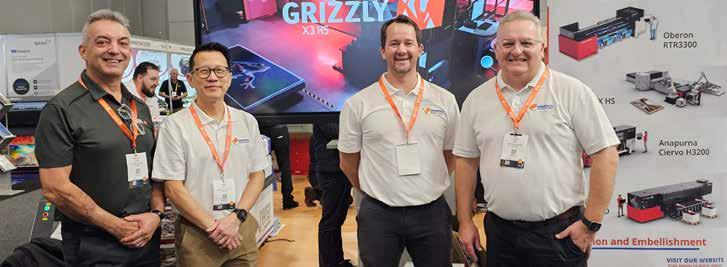
Smartech showcase an expanded range of hardware brands
Smartech showcased its expanded portfolio of hardware at Visual Impact.
On stand was the new HP630W HP Latex 630W printer. The printer features a 1.63 m maximum media width, 1-litre ink cartridges, and supports rolls up to 42 kg. It operates at up to 14 sqm/hr speeds and includes white ink capabilities. “Smartech is a full-line distributor of HP with exclusive access to the HP Stitch” explains Brett Wark, NSW Sales and National Product Manager Sign & Display.
Another new offering is the OKI and Graph Tec label printer and finishing system designed for short-run labelling. This combination is designed to reduce the amount of labour required, as the finishing system slits top and
bottom, as well as weeding and laminating to produce finished labels.
Also on the stand was the Epson SureColour 80600 64” large-format printer, which offers a wide choice of inks for a variety of print applications, including high-value largeformat photo imaging, PANTONE-certified POS and signage, back-lit displays and window decorations, wallpapers, surface finishes, décor.
A more recent addition to the Smartech portfolio is the AGFA line of industrial printers available exclusively through Smartech. Whilst there was no product on the stand, there were videos of the latest application called the “high 5”, where two robots are paired to create an
automatic pallet on a pallet-off capability, resulting in significantly improved efficiency. Also on stand was AGFA expert Phillip Burns, who was available to answer questions about the full range of AGFA industrial printers.
Smartech has also recently announced a partnership to become a distributor for Canon Production Printing.
Brett Wark says, “It’s been an exciting 12 months, with the expansion of our product portfolio and new partnerships making us a onestop shop for print service providers. Smartech has a warehouse in each state with both sales support and service technicians, offering our customers potential for growth and peace of mind that they have backup and support.”

Ball & Doggett made their mark at Visual Impact Brisbane 2024 with a stand themed around sustainability. The stand was constructed entirely from Australian-made EnviroCore board, highlighting the company’s commitment to eco-friendly practices and supporting local manufacturing.
The MetaMark architectural film range made its debut at the show. It featured a good range of colours, all of which are in stock in Australia. The MetaMark team travelled from the UK for the launch and some advanced training sessions with the local team.
The new DTF Eclipse A-620 MAX printing solution was also launched. It is a complete (printer + powder shaker + fixation unit), fully automated system designed to create DTF film transfers. DTF (Direct To Film) is an alternative printing process to DTG (Direct to Garment), White Toner Transfers and HTV
Innovative applications was the focus of the Currie group stand, including a range of features released at drupa.
A highlight of the stand was the Canon Colorado M series with FLXture for Micro-texture printing for special Effects, which is the latest in UV Gel innovation released at drupa. This five-ink-layer printing technology adds micro-texture to large format prints for subtle surface detail, replicating the luxurious and sensory feel of materials such as wood and leather. The Canon Colorado M series itself was printed and wrapped in magnetic material showcasing short life situations for use in education, events and hospitality such as switching menus according to the time of day.
Other applications available to touch and feel were elevated prints up to 4mm which were printed using the Colorado Arizona combined with the PRISMAelevate XL software which was also released at drupa.
The stand itself was printed by Spyder Displays in Brisbane on an EFI
(Heat Transfer Vinyl). Once heat-pressed, the water-based ink is transferred to the garment in just seconds. No Weeding, Pre-treating, B-Papers and being limited to certain substrates. It has quickly become one of the most popular technologies for garment decoration. These machines offer an entry-level, cost-effective solution for high-volume garment decoration.
Also on the stand was the Kornit Avalanche HD6 Direct to Garment printer. Rob Brussolo, General Manager of Sign & Display, said, “The recently announced Kornit partnership is very exciting for us. We are employing engineers across Australia to provide robust service and support to clients.” Brussolo sees the future of garment decoration in Australia, focusing on customised designs, short runs, and quick turnarounds. There were also HP R1 Hybrid Flatbed demonstrations, printing on corrugated foam board and Australian made EnviroCore Board.

Fabrivu 340i +using fully back lit material and there were a range of samples from the full EFI range of printers including roll to roll, hybrid and dedicated flatbed machines, as well as samples from the EFI Regianni direct to fabric printers and the EFI Nozomi high speed corrugated packaging solution.
Also on stand were samples of tooling and substrates cut using the Elitron range of cutters which are distributed exclusively by Currie Group.

Celmac features a range of print, cut, and finishing solutions
On stand was the Kala Mistral 1650 65-inch dual roll laminator. Suitable for high volume runs, the dual roll setup provides increased productivity because whilst one roll is being used, the operator can prepare the next roll, meaning less downtime and greater operator efficiency. This machine is also an inline slitter that slits as it laminates. It also has a remote control, allowing operation from anywhere in the workshop.
Complementing the laminator was the Kala XY Cutter, which cuts and slits at the same time. This model also has a roll-to-roll feature for the wallpaper market.
Also on stand was the Epson SureColour 80600 64-inch large format printer that offers a wide choice of inks for a variety of print applications, including high-value large format photo imaging, PANTONE certified POS & signage, back-lit displays and window decorations, wallpapers, surface finishes & décor. “It comes with standard colour sets and also has a red and an orange ink with the ability to have white or metallic silver as well,” explained Jonny Rumney, NSW State Manager at Celmac. For those needing precision colour management, the Celmac stand featured the
high-end Barbieri Spectrophotometer LFP QB, which measures reflective and transmissive allowing for the measuring of backlit film.
The stand also had the HP Latex R1000 showcased, a hybrid printer that can operate roll-to-roll or flatbed, it uses generation four latex inks with the white, suitable for small to mediumsized businesses. Celmac and FESPA Australia hosted an open-house at SS Signs showcasing the Digitech TruFire LTX2 printer paired with an Aristo 6m long cutter, you can read more on Page 29.
Graphic Art Mart had four stands at the show in Brisbane, highlighting their range of signage, equipment, rigid substrates, vinyls and films. The company showcased various new products at this year’s show.
On display were Aslan Dichromic Films. The SS70 translucent and SS71 opaque films are designed to change colour with light variations, creating unique visual effects. Complementing these are Aslan’s holographic and specialty films, which are ideal for signage, retail, point of sale, and exhibition graphics.
The General Formulations portfolio now available through Graphic Art Mart, previously an Amari brand, was also on display. This collaboration brings a comprehensive range of digital and signage products to the market, ensuring highquality solutions for various applications.
Speaking about the consolidation of Amari into the Graphic Art Mart brand, Mark Carnarvon says, “It’s going well. Placing all consumables,
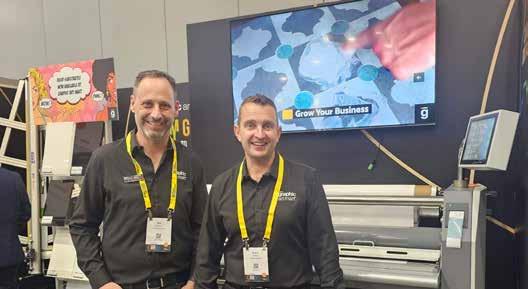
services and solutions under a unified brand allows us to provide complete end-to-end solutions to meet customer needs.”
Newly launched and on display at the show was the Mimaki TXF150-75 DTF Printer – attendees saw demonstrations of the seamless workflow from printing to heat transfer onto garments.
Also on the stand were:
Arlon’s new non-PVC sustainable VITAL range of cast films for car wrapping, launched at FESPA this year, reflects the growing demand for environmentally friendly products. Arlon’s premium colour change range has expanded colours and features FLITE technology, ensuring easy application and long-term removability.
3M’s traffic reflective products, including the DG3 prismatic products and the new 610
Series Beaded Reflective Class 100, are also on display. These products offer exceptional visibility and durability, which makes them ideal for temporary signs and stickers.
Avery Dennison’s paint protection films are another highlight, featuring the Supreme PPF Extreme car wrap film, which provides 10-year protection and is available in gloss and satin finishes. The SP1504 Easy Apply, launched on day one of Visual Impact, was also available on the Graphic Art Mart stand.
On the hardware front the company featured the Wazer 220V/50Hz Cutters, Forte DTF Powder Shaker, and SignMaster 1700 AG Laminator, demonstrating their commitment to providing comprehensive solutions for the signage and printing industry.
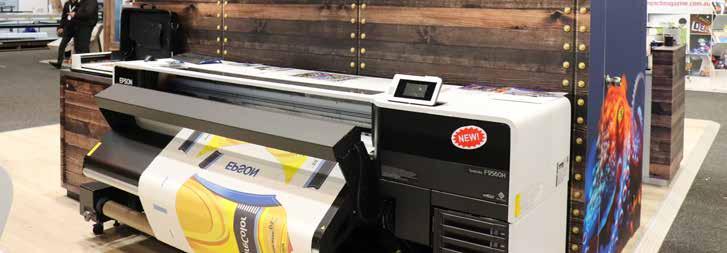
The new model replaced the previous SC-F9460 and SC-F9460H, offering outstanding image quality, significant speed improvements, extended colour support, and convenient consumables management in a more compact package. Epson’s show theme, “Beauty in Every Dimension,” was embodied by the SC-F9560, highlighting current trends and future growth in merchandise production, signage, and fabric production.
The SC-F9560 is easy to operate, featuring a large touch panel display with integrated help and Edge Print software that shows users on-screen previews. It delivers high productivity with heavy-duty motors and a 2.64-inch PrecisionCore printhead, supporting various media types on rolls up to 45 kg with a bulk ink system. The compact design includes a low profile, integrated heater, high precision auto take-up, and a roll loader for single-operator management.
The 6c SC-F9560H model can be configured with LcLm ink for fine gradation, OrVi for maximum gamut, or FyFp fluorescent ink for brightness. Users benefit from lower running costs, low power consumption, and a high degree of self-maintenance, leading to a low total cost of ownership. The printhead is covered under a 12-month warranty, extendable up to five years via Epson’s CoverPlus.
The SC-F9560 integrates with Epson’s Cloud Solution PORT, offering web-based and mobile access for reporting, tracking, and costing. It also supports user self-replacement of the printhead. The optional Epson SD-10 spectrophotometer enables easy spot-colour matching and enhanced profiling.
The SC-F9560 also conforms to Epson’s environmental goals with reduced packaging, recycled content, and consumables that produce less waste.
Key features of the new printer include:
• Quality output at up to 80 sqm/hr and sellable output at up to 147 sqm/hr
• User-replaceable PrecisionCore printhead with 6400 micro-fine nozzles on the 4c model and 9600 nozzles on the 6c
• Variable dot sizing for optimal colour expression
• Media support up to 1625 mm wide in rolls up to 250 mm diameter
• Quiet operation at only 59 dB
Other products demonstrated at Visual Impact were:
• SureColor F1060 compact desktop DTG and DTFilm printer
• SureColor V1060 compact desktop UV printer
• SureColor P20560 64-inch aqueous printer
• SureColor F160 compact dye sublimation printer
• SureColor S80660L 64-inch eco-solvent printer
• Epson SD-10 spectrophotometer with Auto Table
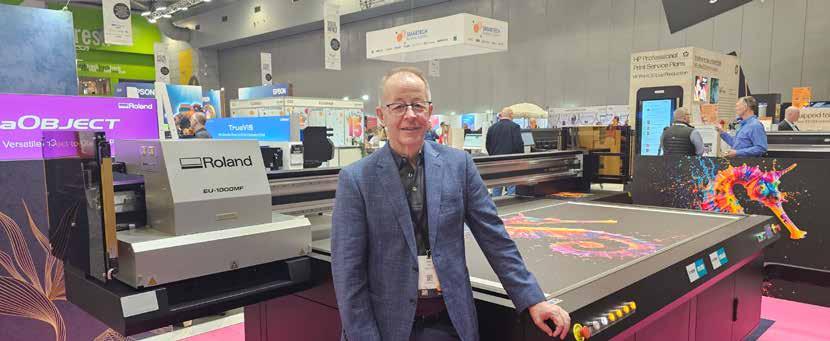
Roland DG Australia has debuted the EU-1000MF large format UV-LED flatbed printer at Visual Impact in Brisbane.
The printer can print on a wide range of materials up to 95mm thick for various applications, including sign graphics, event and store displays, décor, and small-lot and high-mix custom goods.
The EU-1000MF is available in two models, 4-colour or 6-colour, with printheads in a staggered array for printing up to 27.6m2/h in 720 x 600 dpi CMYK mode and enabling it to handle approximately nine rigid 1,220 x 2,440 mm boards per hour. The UV ink is cured instantly, eliminating the need for post-print drying. At the same time, the ability to print directly onto various materials such as acrylic, PETG, PVC, foam, PC, wood, and aluminium composite boards further reduces
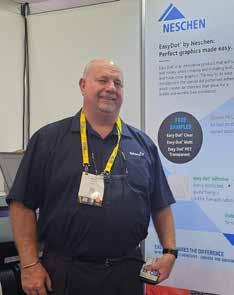
post-processing time and costs.
Also showcased was the MO-240 VersaObject the company’s newest direct to object printer, superseding the LEF2 Series. The printer has a higher clearance of up to 200mm high, and a bigger print bed. It also has new eUV5 generation inks offering expanded colour gamuts. Typical applications include the promotional market but at a high volume, and industrial applications such as switchboards, computers.
The VersaStudio BD-entry level UV printer aimed at smaller businesses was also demonstrated at the show, it is similar to the MO240 but with a smaller footprint. Ideal for personalising items in smaller volumes, suited to retail, or smaller business operations.
Spicers brought an impressive lineup to Visual Impact Brisbane, highlighting their strong partnership with 3M and a broad range of renowned brands. Underscoring this approach is the new distribution agreement with Neschen. Attendees explored the Neschen EasyDot range, on show for the first time in the Brisbane market.
The stand also featured the new RollsRoller Signature Plus, equipped with auto leg adjustment, addressing OH&S concerns and enhancing operational safety. Visitors had the opportunity to see top products from Mimaki, Roland, and General Formulations.
Wayne Hood Visual Communications Portfolio Manager, Spicers says, “We are also
The latest Summa S3 made its Australian debut on the Pozitive Sign & Graphic Supplies stand.
The S3 has the same tangential technology as its predecessor, the S2, allowing the knife to lift and rotate, significantly increasing cutting precision. The new S3 model features a new lighting system with blue, green, and red lights, improving visibility and accuracy during operation. Warren Davey, National Equipment Sales Manager, says the S3 also has creasing capability, enabling it to be used for small box production using light boxboard, as it can cut and fold.
Additionally, the new software in the enhanced S3 optimises cutting lines for maximum efficiency, while an advanced camera system replaces the traditional scanner, offering instant mark recognition for much faster processing. The upgraded motor in the S3 further boosts its performance.
Visitors to the Pozitive stand were also treated to demonstrations of the versatility of the Summa F series flatbed cutter, capable of performing ten different applications in just 40 minutes, and the entry-level S1 cutter, offering a cost-effective yet high-quality cutting solution.
celebrating a decade-long partnership with 3M, which has seen Spicers expand its range of 3M products from standard graphics and colours to architectural and window film tapes, adhesives and reflectives. It’s a very broad portfolio and we are celebrating with the 10 of three promotion which is ‘10 years of 3M’ and there are some really good prizes to be won by those purchasing 3M products through Spicers.
This years’ stand showcased Spicers’ commitment to being a ‘House of Brands’ and leveraging our excellent relationships and support from the stable of well-known brands for our customer’s benefit,” concludes Wayne.
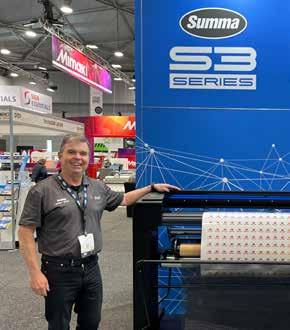
HP presented its latest technologies at Visual Impact Brisbane 2024, with the Australian debut of the HP Latex 630W printer. The printer features a 1.63m maximum media width, 1-litre ink cartridges, and supports rolls up to 42 kg. It operates at up to 14 sqm/hr speeds and includes white ink capabilities.
In addition to the printer, HP showcased innovations from drupa, including the Live Production Printer Remote Control software, designed to improve productivity for small— to medium-sized print service providers. This software enables users to manage their workflow remotely from any PC or mobile device, allowing unattended printing and streamlined production.
Another key focus for HP was education, explains Craig Hardman, ANZ Country Manager Large Format Printing at HP. “HP Learn is a series of educational workshops that teach you anything, from how to use your printer to how to create applications. There are already over 100 videos available that include training from industry experts like Jeremy Brew. It allows print service providers to be able to learn and train on the go and that’s all included with their solution. So not only are they doing obviously controlling their business, they’re able to learn more about how to do new things.”
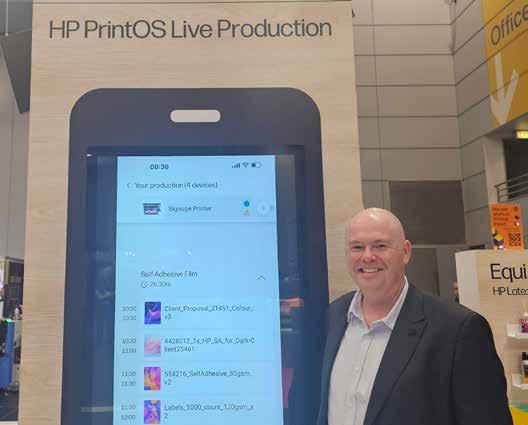
Visitors could also see the latest upgrades to its Design and e-commerce software. Recognised by the European Digital Press for its Web-to-Print solution, this software simplifies the creation of print-ready PDF files for large-format applications like canvas
and wall coverings. The new functionalities enhance compatibility with various websites and support on-demand quotation processes, helping print service providers reach new online customers.
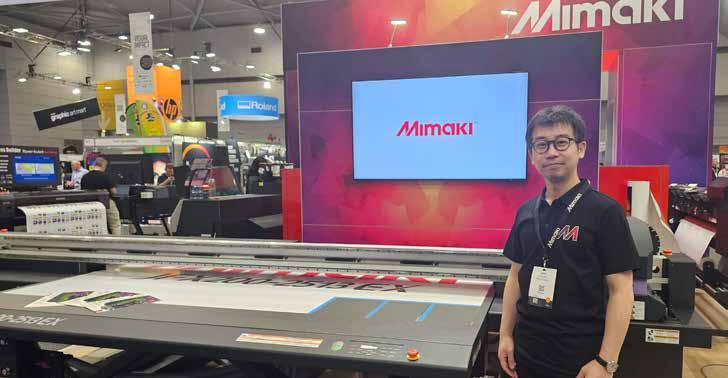
Mimaki unveiled a range of upgrades and cutting-edge printing technologies at the show, highlighting their commitment to innovation and quality.
The TXF 300 made its Australian debut and generated significant interest, with all available stock sold out. This model is twice as fast as its predecessor, the TXF 150, and is noted for its vibrant print quality, exceptional white ink performance, and soft feel of the print.
Mimaki also introduced the UCJV-330, an upgrade to the UCJV-300. Featuring brand-
new print heads, this machine nearly doubles the speed of its predecessor while maintaining the same high-quality output. The UCJV-330 is a versatile print-and-cut system capable of producing textured prints. Mimaki’s UV printand-cut technology continues to be a popular solution for various applications.
Another highlight was the TRAPIS system, which demonstrates its ability to print onto paper and press onto a variety of textiles without the need for pretreatment. This system combines the vibrancy and washability of sublimation printing with the capability
to produce cotton and blends, offering unmatched versatility. Applications were on display on the Mimaki stand.
JFX 600 PRINTER AND CFX 600
On display at the Mimaki stand were applications from the JFX Printer and the CFX 600 printer and cutter, with applications shown on reBoard.
The KEBAB HS (High Speed) cylindrical printer was a standout, offering three times the speed of the previous model. Unique to this printer, the print head remains stationary while the object moves under it, setting it apart from other similar devices.

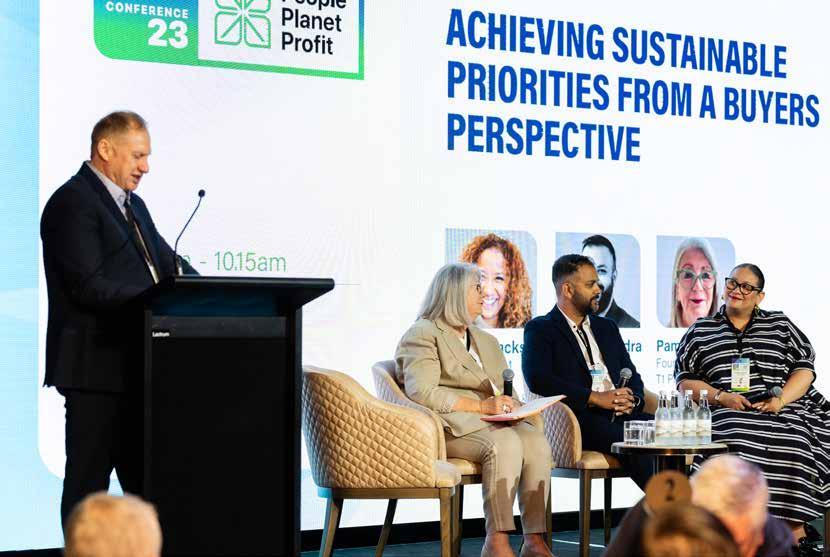
FESPA Australia is holding its Annual Conference in Sydney on Friday October 25th 2024. With its theme of Transform, Inspire, Lead, the FESPA Annual Conference will encapsulate the journey of your business, from adapting to change and innovation (Transform) to motivating and empowering individuals (Inspire) and ultimately leading with effective leadership (Lead) towards sustainable growth and success.
Kicking off the proceedings and setting the scene and tone for the day will be key note speaker Gus Balbontin, former Executive Director and CTO of Lonely Planet, who is renowned for his innovative thinking and transformative insights. With a rich history of navigating and shaping the future of industries, Gus will share his expert predictions and strategies that can help you and your business adapt and thrive in our ever-evolving market. His session promises to be both inspiring and thought-provoking, providing valuable takeaways you can implement immediately. Gus will also facilitate an interactive Leadership Workshop where you will learn first-hand key strategies to assist you in your leadership journey.
Following this session you will hear insights and debate as to why succession planning and exit strategies are crucial components of a business’s long-term success and sustainability. These strategies will help you focus on preparing future leaders and ensuring business continuity. Together, they will help create a resilient, forwardthinking organisation capable of effective navigational leadership changes and ownership transitions.
Other sessions will focus on better relationships with younger and new staff. There is no denying a cultural disconnect between a manager or business owner now in their 40s or 50s and a school leaver in their teens or early 20s. To survive and thrive, businesses need to make the most of new talent that joins their ranks by offering diversity and inclusion in a supportive environment.
Another topic to be discussed is how the print industry’s sales role has evolved significantly over the last few years, with a substantial shift towards digital engagement, consultative selling, and
integrating technology solutions. Sales professionals need a blend of digital literacy, technical knowledge, and adaptability to grow in this new environment. Participants will hear about the trends in B2B and B2C sales. The importance of personalised, multi-channel engagement and the adoption of integrated systems to ensure a seamless, efficient operation from marketing to invoicing.
Sustainability continues to be a hot topic, and participants will hear how regulatory demands are forcing more businesses to rethink and take action. Learn from initiatives that are taking place in Europe and how this will assist you in your day-to-day sustainability journey.
If all these topics are not enough to keep you awake at night, Dr Toby Ford will present how to deal with stress and burnout! Dr. Ford is a respected expert in this field and will offer practical guidance and strategies to help you maintain your well-being and sustain high performance. His session will provide you with the tools to better manage stress and the pressure of running a business, ensuring you remain resilient and productive.
Networking has always been a cornerstone of the FESPA Annual Conference, and this year, we are taking it to the next level with curated specialised networking sessions that will provide you with the tools, insights, and connections necessary to navigate the future of our industry successfully. Make sure you mark your calendar and join us in October for an event that promises to be enriching and inspiring. We look forward to seeing you there!
Tickets are available on the FESPA Australia website fespaaustralia.org.au . For more information, email membership@ fespaaustralia.org.au
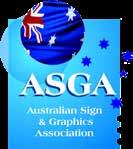

A survey by the Australian Chamber of Commerce and Industry (ACCI) has found that almost half of small business owners have considered closure in the past year, with rising input costs, skills and worker shortages, and increased government regulation all taking their toll.
ACCI, Australia’s largest business network, polled small business owners from around the country to understand how they were faring in the current economic and regulatory environment, and the findings were concerning.
Among its specific findings, the survey results showed:
• 45 per cent of small business owners have considered closing or leaving in the past 12 months.
• 82 per cent of small business owners said that red tape significantly or moderately impacts their business.
• 50 per cent of respondents said they were spending more time on red tape than 12 months ago.
• 40 per cent said they would make a reduced or significantly reduced profit this financial year compared to the previous year.
• More than 50% said their biggest expense was overcoming skills and worker shortages.
Mick Harrold, President of the Australian Sign & Graphics Association, agreed and said the findings were concerning but were in line with the feedback the association is receiving from its members across the sign, display and broader graphics sector, echoing the comments of ACCI chief executive officer Andrew McKellar saying small businesses are ‘the backbone of our economy’ but are being ‘strangled by red tape’ and often neglected when it comes to policy making, legislation and regulations.
“SMEs make up a huge proportion of the businesses in our sector, and they are
facing some of the toughest conditions we’ve seen for years, with input costs rising almost daily, a global skills shortage and an increasingly confusing regulatory environment,” Harrold says.
“ASGA joins with other industry associations in calling on governments, policymakers and regulators to ‘do better’ for small businesses by focusing on initiatives which put downward pressure on the cost of essential inputs like energy, make it easier to create jobs and employ people, and reduce unnecessary regulation and red tape.”
While the full impact of the government’s changes to industrial relations law has not yet fully been felt, they were already a significant concern for business owners who said they fear a damaging, or highly damaging, impact – both from compliance obligations and the potential for unions to interfere with their decision-making.
“There is no question that the regulatory environment continues to become more complex and confusing every year,” Mick says.
“While governments are always keen to introduce new legislation, they often do so without proper consultation with the industries that will be most affected, and without much effort to ensure impacted businesses have the information, resources and supports they need to understand changes and comply.
“For small businesses, time is quite literally money. Additional administration and compliance obligations can quickly eat into profits; conversely, saving time on administration and compliance can boost productivity and profitability.”
With a lack of resources and support provided by the government, Harrold says the role of associations like ASGA has become ever more important, providing vital information, support and resources to help businesses address these key areas.
“At ASGA, our focus is to help businesses with their administrative, regulatory and HR functions so that they can concentrate on doing what they do best,” he says, pointing to a newly expanded range of Member Benefits that includes legal, HR and WH&S resources, regulation and technical support, a comprehensive employment guide, and templates for everything from employment and sub-contractor contracts to enterprise agreements.
“In addition, we have formed a partnership with MEGT to assist businesses in finding and employing apprentices and trainees, and with Australian Business Lawyers & Advisors to provide a full range of workplace relations and employment law advice via our dedicated ASGA Workplace Advice Line,” Harrold says, adding that all businesses in the sector are welcome to email mande@signs.org.au, to discuss concerns or issues at any time.
“The sole purpose of the ASGA is to represent and support businesses across the sign, display and graphics sector. We will continue to build our range of Member benefits and resources and ensure our voice is heard on important issues impacting our members.”
A complete list of ASGA member benefits can be found on the ASGA website.
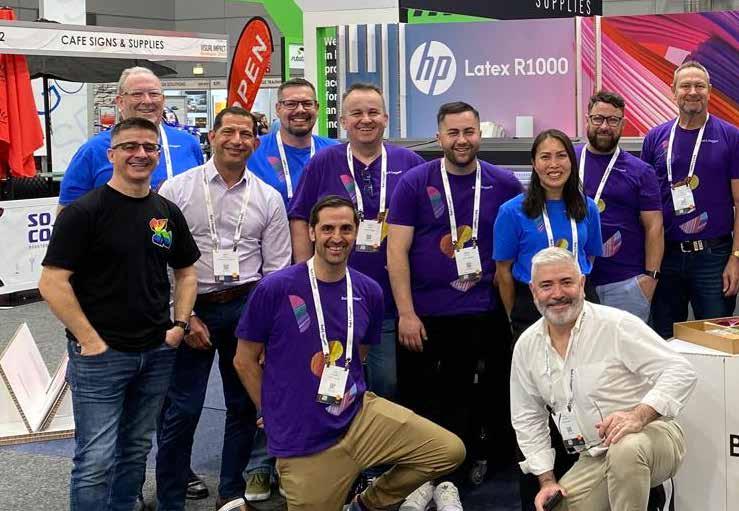
Ball & Doggett and GALE Pacific recently announced an exclusive partnership to bring Ecobanner by GALE Pacific to the Australian market at Visual Impact in Brisbane.

The innovative Ecobanner is the only Australian-made, PVC-free flexible banner fabric capable of offering a 100% closedloop recycling solution.
Ecobanner is the first product of its kind to be manufactured in Australia with closed-loop recycling capability. This eco-friendly banner material supports local manufacturing and aligns with the growing demand for sustainable and environmentally responsible products.
As the 2024 Sustainability Award winner at the World Out of Home Organization (WOO) Awards, this is a groundbreaking material for the Sign & Display market. Ecobanner can be recycled back into the same product, avoiding landfill.
The polypropylene composition makes it a robust and versatile material, perfect for both indoor and outdoor applications by ensuring durability and vibrant print quality on latex and UV Inkjet printing technology. Ecobanner is available in Back Lit (white/white) and Front Lit (grey/white) banner options and generous 1600mm or 3200mm widths.
Furthermore, Ecobanner is part of a traceable full circular loop program, allowing for the complete recycling and
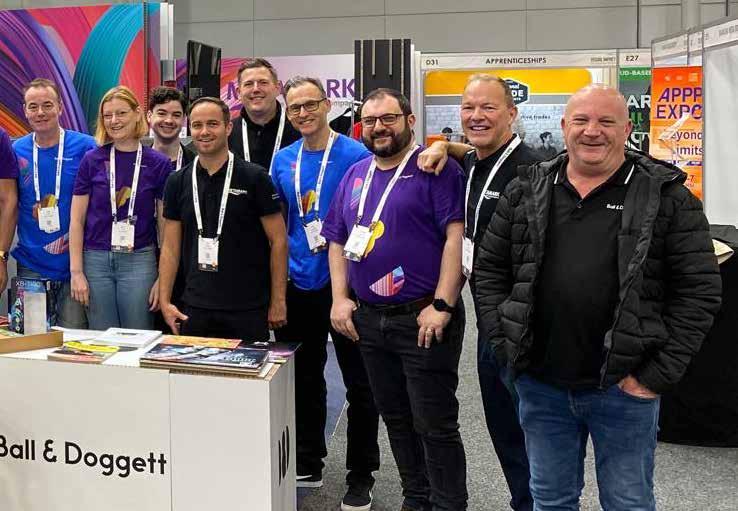
repurposing of used banners. This contributes to a sustainable lifecycle and minimizes environmental impact. Unlike greenwashing claims, this Closed Loop Program is already in full swing, and its impact is measurable, demonstrating a genuine commitment to sustainability.
“We are thrilled to bring Ecobanner to the Australian market,” said Rob Brussolo, Ball & Doggett General Manager – Sign, Display & Digital. “This initiative underscores our commitment to providing innovative, high-quality, and sustainable solutions to our customers. Ecobanner not only meets the rigorous demands of flexible banner advertising but also sets a new standard for environmental stewardship in our industry.”
“Ecobanner not only meets the rigorous demands of flexible banner advertising but also sets a new standard for environmental stewardship in our industry”
Rob Brussolo
Healthy stock volumes of Ecobanner are available across all Ball & Doggett locations. The fabric is wellpositioned for the signage market and for socially conscious business brands aiming to enhance their sustainability narrative.
Ball & Doggett’s extensive distribution network and deep market knowledge will ensure that Ecobanner reaches a wide array of customers, from local businesses to large enterprises, empowering them to make sustainable choices for their advertising and signage needs, and to provide sustainable options for their clients.


2030 is a crucial milestone for sustainability and Australia’s international commitments to the United Nations Sustainable Development Goals (SDGs) and the Paris Agreement. While these commitments are broad-reaching, 2030 is also a key milestone for more focused programs outlined in the National Waste Policy and the Recycling and Waste Reduction Act (RAWR). The RAWR Act provides a framework for managing Australia’s recycling and waste reduction objectives. A key objective of the Act is to encourage the development of a circular economy, including through product stewardship. The Act provides for three levels of product stewardship: voluntary, coregulatory and mandatory.
While the paper industry is well developed in its circularity, let’s consider two other categories that generate large volumes of printing. Firstly, the packaging industry which has been focused on sustainability since 2011. Targets for packaging are set according to the Australian Packaging Covenant, with 2025 as the deadline to ensure 100% of all packaging is reusable, recyclable or compostable; 70% of all packaging is recovered, recycled or composted; packaging includes an average of 50% recycled content; and that problematic and unnecessary single-use packaging is phased out.
Secondly, let’s consider the textile industry. In 2021, clothing textiles were placed on the Federal Minister’s Priority List for Product Stewardship, with the industry required to reduce clothing sent to landfills. In 2023, the Hon. Tanya Plibersek MP launched Seamless, which aims to create a circular clothing industry by 2030, where responsible stewardship and citizenship are embedded across the entire clothing lifecycle. A recommended 4c/ per garment levy will be used to create programs to incentivise clothing design that is more durable and recyclable, foster new circular business models, close the material loop and expand clothing collection, sorting and recycling. In launching the program, Plibersek issued a clear directive that the scheme would be mandated if not taken up by enough businesses, “I want to see industry leadership… But if I don’t see enough movement in a year, then I will regulate.”
Whilst there is currently no legislation for wide format printing and signage, it seems only a matter of time before we are impacted as part of the broader manufacturing sector. Earlier this year, I undertook a “study tour”, the objective being to learn more about some of the legislation that exists and best practices in the wide format and signage industry in Europe, to understand and bring insights about some of the
tangible actions that could be applied locally by our industry leaders. I attended FESPA and drupa, and I visited and spoke to a number of stakeholders, suppliers, industry experts and print service providers.
In this spotlight on sustainability, I begin with some of our industry’s key global suppliers of self-adhesive film, whose leadership and stewardship are critical to reducing greenhouse gas emissions, developing PVC-free alternatives, and developing a circular economy. Recycling PVC has, to date, been in the too-hard basket, but as you will read, we now have tangible second-life and third-life options being developed overseas.
The solutions are complex, with multiple factors at play, including material separation, collection, avoidance of contamination, storage, conversion into a recycled waste stream and having enough manufacturing capacity, ideally domestically, to consume the waste streams. Developing and implementing a solution in Australia is multi-dimensional and requires collaboration between purchasers of signage, signage service providers, suppliers, associations and the government to incentivise circularity and domestic manufacturing.
As business owners in the wide format and signage industry, we stand at a crossroads. The choices we make now will shape not only the future of our businesses but also the industry’s sustainability profile. Are we ready to lead the change, or will we wait for regulation to force our hand?
Janet Maitland is the Publisher of Image Publications, the premier publishing company for wide-format, signage, graphics, and textile printing businesses in Australia and New Zealand. A longterm member of the industry since 2005, Janet is dedicated to leveraging Image Publications’ media platforms to facilitate industry growth and knowledge sharing among its members.
If you wish to have further discussions about sustainability in our industry or to discuss potential partnerships, please email janet@ imagemagazine.com.au

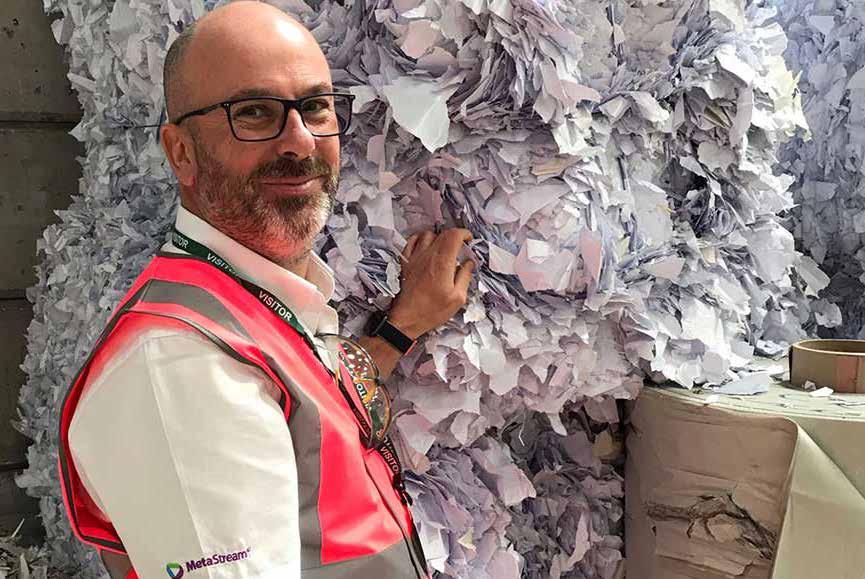
Metamark was founded, in the UK thirty-two years ago and was a family-owned business until seven years ago when a group of employees, headed by the company’s then CEO, Paul French and backed by private equity, took over the business in a management buyout.
Since then, Metamark has made significant investments in new product development and growing manufacturing capacity. The company has grown year-on-year and experienced considerable international expansion. Metamark is represented in Australia by its distribution partner, Ball and Doggett.
Metamark’s primary manufacturing facility and corporate headquarters is in Lancaster in the Northwest of England, which is where I caught up with Iain Wallace , Strategic Development Manager, who’s the creator of MetaStream®, the company’s recycling initiative for Metamark, for an exclusive factory tour and interview about it and Metamark’s broader sustainability programme.
By Janet Maitland, Publisher, Image Publications
“Environmental responsibility has always been a big part of our culture at Metamark,” said Iain. “Our Environmental and Social Governance Policies recognise our responsibilities toward the planet, our employees’ and partners’ wellbeing. and our operational and business ethics.
“From a manufacturing perspective, we run three shifts daily, six days a week. We have developed fifty different liners, sixty different films and twenty different adhesives, which are combined to create over 3,500 SKUs. We are ISO9001, ISO14001, ISO50001 certified and are in the process of becoming EcoVadis certified.
“In addition to developing a range of PVC-free products, we also want to help the industry become more environmentally responsible, which is why we have invested heavily in developing MetaStream. MetaStream is a recycling initiative which recovers production waste and end-user products that use qualified Metamark materials and turns them into useful articles that can themselves be recycled multiple times.
“MetaStream was developed during COVID and initially started as a program to help us achieve one of our manufacturing ESG objectives, ‘Zero to Landfill,’ explains Iain. “We began by focusing on finding a way of recycling unlaminated film and then refined our processes to
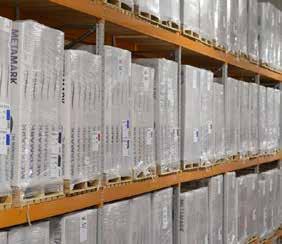



include laminated and printed materials. This waste stream is mixed with other recycled content and virgin PVC and used to make items such as traffic cones,” says Iain.
“Over time, it has become more sophisticated so that now the processer can make two or three variations of the output waste stream, and depending on demand at the time It can go into gum boots, flooring, fence posts and traffic cones among other things.
“These products can themselves be recycled at end of life, so while it is not a truly circular solution as we are not turning graphics products back into the same graphics products, we are enabling second, third, and fourth life articles. This reduces the amount of potentially useful materials end up in landfill or incineration waste streams.
“There are other solutions around for graphics waste, such as shredding, and that may generate one additional life, but where does it go after that? Much of it ends up, again in landfill. One motivation for developing MetaStream, using the processes we have, is the desire to engage genuine recycling and offer it as an option. The other positive impact is that the buyers of our qualified materials are buying a reduced carbon product as Metamark has already paid the carbon footprint for the virgin material through its carbon offset projects.
“The next step is to get our supply chain to do the same thing so that this contributes to our decarbonising,” says Iain. “Wanting to recycle all elements of the product, we then focused on liners. We work closely with James Cropper PLC, a global market leader in advanced paper products based in the UK. James Cropper had already developed a process to recycle PE-coated paper coffee cups. Coffee cups and liners share a little DNA. Two of our liners already qualified for their recycling program, and we went on to develop a third liner specifically for the program.
“James Cropper has capacity to recycle the equivalent of 500 million coffee cups each year, and they use the “Cup Cycling” fibres to make luxury paper and packaging products for global brands who require a large amount of recycled content for their products”, explains Iain.
“From a manufactured volume perspective, 65-70% of the products we ship are fully recyclable. The rolls come in a cardboard box, which can be fully recycled. The end caps can go straight into the plastics recycling bin, or we can take them back. The core is cardboard and can be recycled too.
“Regarding logistics, our customer aggregates waste and either palletises it, bails it or compacts it into a special bag that we supply. We manage the logistics to collect
this waste as part of our scope two emissions. We also connect like-minded customers so that a smaller sign shop that may not have the volume can take their waste to a larger sign shop nearby that does.
“We end up with more liner than film because the film is out there doing its job and most of it isn’t production waste. Our customer rolls the liner back onto the core. In terms of sorting, it is pretty simple: Metamark-qualified products need to be separated into PVC or liner streams.
“In terms of cost, like any other waste management service, the cost is born by the consuming business. One tonne of baled PVC waste is about 7,000 Sqm of vinyl. A palletised bale is approximately 400kg, so the shipping cost of 2.5 pallets divided by the 7,000 Sqm is a small cost per square metre and a business overhead which more and more businesses are building into pricing already,” explains Iain.
“We’ve had the program independently audited, and moving forward once we gain accreditation, EcoVadis will be the process that audits it. While it is currently only available in the UK we have designs on taking the initiative much wider and continuing to innovate with the processes and logistic models at the core,” concludes Iain.
Rob Brussolo, General Manager Sign and Display for Ball & Doggett says. “Metamark are always pushing the boundaries of innovation in terms of sustainability, whether it is through their products or services and Ball & Doggett are excited to be partnering with such a progressive company. We believe working closely with our supply partners enables the Australian market to gain access to world leading initiatives that we can expand into Australia.”
“Sustainability is on everyone’s agenda, whether socially, politically or ethically and our consumers are demanding solutions by key industry suppliers. While Australia may not be as advanced as other countries in regards to plastic recycling, the willingness to recycle used materials have gained momentum in recent years and Ball & Doggett understands the urgency to provide solutions.”
“Ball & Doggett are also excited to announce that Metamark will be launching their range of PVC free products later this year which will be stocked locally in Australia. These new products provide choices for the Australian sign industry that would like to take the next step in their sustainable journey. Whilst MetaStream is not available in Australia at this point in time it gives an excellent window into the future of what is possible and what we should be progressing towards as we move forwards in our sustainability journey,” concludes Brussolo.


M E TA M AR K INTERIO R A R C H ITE C TU R A L FIL M S .
B E T T E R . F OR E VE RYO N E.

MiA™ is a new range of interior architectural lms from Metamark. MiA transforms interior infrastructure so you don’t have to replace it. That costs you and the planet less, and prolongs the life of building fabric and xtures. MiA isn’t just better. It’s better for everyone.

There’s no need to replace costly internal infrastructure when you can easily transform it SUSTAINABLE. cleaned, hardwearing, and they last for years DURABLE.
The MiA range includes contemporar y wood soft matt BEAUTIFUL.

Available through these leading distributors:


Once you’ve decided to use MiA, you won’t want to wait You don’t have to The range is in stock now AVAILABLE.


Hexis Head Office Frontignan, France
Headquartered in Frontignan in the south of France, Hexis is a family owned company established in 1989 by husband and wife team Michel and Michèle Mateu who started with a vision to produce adhesive PVC films for the advertising and visual communication industry. Today the business is run by their children Caroline and Clément and has grown to manufacture over 3,000 products, with more than 500 employees, two research and development labs, 10 subsidiaries including Hexis Australia which was established in 2018, and over 20,000 customers worldwide. I visited Hexis Frontignan and met with Christophe Inigo, Director of International Sales and Guillaume Leonardon, Director of Quality and Sustainability, for an exclusive factory tour and to discuss the company’s recently launched PVC recycling program.
By Janet Maitland, Publisher Image Publications
“Hexis has always been extremely committed to ongoing sustainability and supporting our industry to do the same,” says Guillaume Leonardon, Director of Quality and Sustainability, Hexis. In Europe beginning in 2025 the Corporate Sustainability Reporting Directive (CSRD) requires businesses with more than 250 employees and turn over greater than €40 million to use the European Sustainability Reporting Standards (ESRS) to provide audited reports on the impact of corporate activities on Environmental, Social and Governance (ESG) related risks. “The ESRS are considered equally important as financial reports so we have been investing heavily in resources, adding two new people to our team in the last 12 months just to manage sustainability,” says Guillaume.
“Our manufacturing facilities are ISO9001 (Quality), ISO 14001 (Environmental) ISO 45001 (Health and Safety and the Frontignan plant is also IATF 16949 (Automotive Quality) certified. We have achieved multiple Corporate Social Responsibility (CSR) certifications including accreditation from the UN Global Compact, the Forest Stewardship Council for the purchase of liner from responsible forests and we were awarded a Gold Medal by Ecovadis. Our ESG initiatives are focused on reducing our impact on the environment, ensuing ethical business practices and creating a safe and inclusive working environment that enables everyone to achieve their full potential,” explains Guillaume.
“From a manufacturing perspective a key focus this year has been to analyse our carbon footprint across our whole supply chain and to put in place programs to reduce our greenhouse gas emissions. We have also implemented projects around safety and recycling in the
factory,” says Guillaume. “One of the key things we have learnt that applies to any business, is that it is critical to invest in getting accurate figures to establish a baseline that you can report and measure against every year, then set targets for future improvement.”
“In addition to our manufacturing initiatives we also have developed recycling programs to support our customers in becoming more responsible,” says Christophe Inigo, Director of International Sales.
“We started by developing a system to recover and reuse Hexis end caps. The end caps are collected from the printer, sorted and reintroduced directly back into the HEXIS packaging process. While it can only apply to HEXIS end caps due to the variety of end caps used by different adhesive manufacturers, the impact is still significant with more than 60,000 caps recovered and reused in 2023,” explains Christophe.
End caps returned to the packaging line
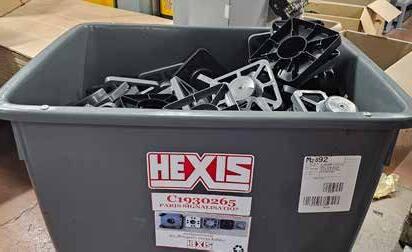




“We then began researching how we could recycle liners and PVC. We are proud to be one of the first companies in the world to launch a recycling program for kraft liner, PET liner, PE liner, and PVC films,” says Christophe. Officially launched at FESPA Amsterdam in March 2024, the recycling program which was developed and trialed in France for six months, was expanded to include Spain, Italy, France, Germany, Switzerland, and the Scandinavian nations, with further expansion to Netherlands, UK and Belgium to follow.
The PVC recycling program includes the collection of all brands of printed/laminated PVC films. The customers bail or palletise it and ship it back to the HEXIS warehouse in five pallet lots. HEXIS then consolidates it and delivers it to the processors who convert it into raw material waste streams for products that include recycled content such granules and micronized PVC for use in non potable PVC pipes.
The liners recycling program applies to Hexis kraft, PET and PE liners which are then converted into insulation products.
“Hexis is proud of our family-oriented culture where we are all encouraged to act as managers and focus on working closely
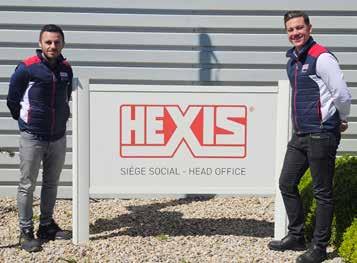
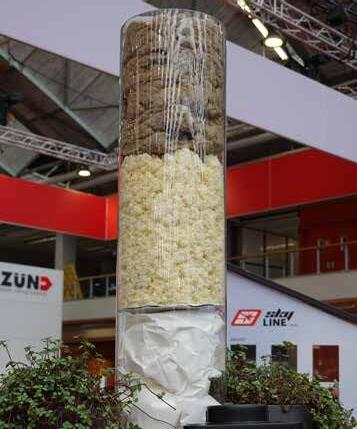
with customers to find solutions, which is important when you are pushing the boundaries of what is happening in the marketplace,” says Christophe. “Finding ways to improve waste management is very important to all business owners in France across all industries as the government uses taxes as a tool to reduce waste. We developed this program and trialled it with fifty companies in France to create a clear set of processes and agreements between participating companies and Hexis. Leadership and staff engagement at the printer is a key success factor, as is education in specifically controlling materials sorting at the printer to avoid contamination of the waste stream, which can become expensive if it gets rejected by the converter.”
When asked about plans to introduce this program in Australia/ NZ, Christophe did not rule it out but noted that “The program is very localised as it relies on a network of like-minded strategic partners, including printers, transport companies, converters, and manufacturers, to work together, and these strategic partners vary between each country.”




With revenue of more than $US 8.4b and over 36,000 employees, Avery Dennison (NYSE: AVY) is a global materials science and digital identification solutions company that provides a wide range of branding and information solutions that optimise labour and supply chain efficiency, reduce waste, advance sustainability, circularity and transparency, and better connect brands and consumers. Its products and solutions include labeling and functional materials, radio frequency identification (RFID) inlays and tags, software applications that connect the physical and digital, and a variety of products and solutions that enhance branded packaging and carry or display information that improves the customer experience. Serving an array of industries worldwide — including home and personal care, apparel, general retail, e-commerce, logistics, food and grocery, pharmaceuticals and automotive. I visited Soignes, Belgium for an exclusive tour of Avery Dennison’s largest graphics production facility, and to meet with Jordy van der Heijden Global Technology Platform Director, Advanced Materials Solutions, Avery Dennison Materials Group to gain a deeper insight into the recycling and circularity sustainability initiatives of one of our industries’ largest suppliers.
By Janet Maitland, Publisher, Image Publications
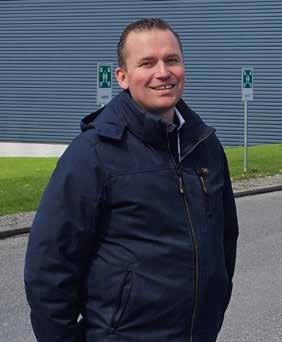
Global Technology Platform Director - Print & Media
I was first exposed to Avery Dennison’s sustainability program at a product launch at FESPA in 2018, where the presentation was less about the new product and more about their highly sophisticated and comprehensive ESG framework, the targets that had been set and the initiatives and measurement tools that had been put in place to reach those targets. Today, Avery Dennison targets include reducing Scope 1 and 2 GHG emissions by 70% by 2030 (2015 baseline), and reducing Scope 3 GHG emissions by 30% by 2030 (2018 baseline).
The Avery Dennison ESG framework comprises three sustainability goals.
1. Deliver innovations that advance the circular economy
2. Reduce our environmental impact in our operations and supply chain
3. Make a positive social impact by enhancing the livelihood of our people and our communities
Jordy van der Heijden Global Technology Platform Director, Advanced Materials Solutions explains “Taking a leadership position in sustainability has been part of our DNA for many years, it is an integral part of everything we do. We develop products with sustainability in mind, from the materials we use, to how they’re constructed or treated at end-of-life. We are developing solutions for advancing the circular economy. We are particularly focused on increasing materials recyclability and using recycled content in our products.
“Our Global Technology team is focused on developing key product components, such as PVC-free films which are chlorine free and reduce emissions of volatile organic compounds (VOCs). We have also developed a high performing innovative adhesive platform called iA Tech™ Adhesive which contains no solvents. This innovation reduces the use of fossil material compared

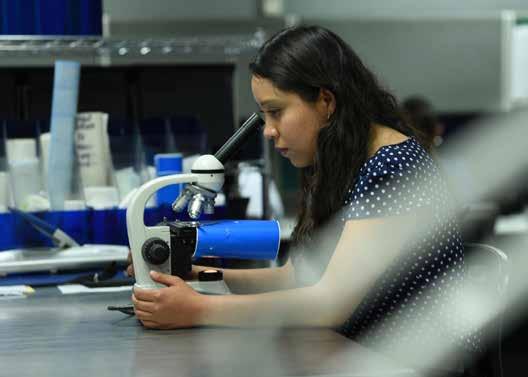
with solvent adhesives, saving an equivalent of around 1.6l1 of oil per roll (1.23m x 50m), which is equivalent to reducing the emissions generated from 15km driven by an average gasoline-powered car.”
“We have also reduced material usage through the development of dot adhesive products which use 60% less adhesive than standard adhesive coating. These components form the basis of our Sustainable Advantage Portfolio.”
In terms of recycling programs AD Circular is a European recycling program which enables manufacturers and brands to recycle used label liners from any manufacturer. Companies use an online web app to schedule pickup and transportation of used label materials to one of our recycling partners, at a cost comparable to landfilling or incineration. The used label liners are converted into recycled film liners for labels making it a truly circular solution. The web app also provides useful data in the form of regularly updated analytics and certificates on the amount of recycled liner material, the amount of CO2 emissions users have avoided as a result. With 100,000 labels generating over 100kg of label liner waste it has the potential to have a significant impact.
In the graphics sector, Avery Dennison Australia has led the way being the first to launch a Plastic End Cap Recycling Program in April 2022. Through this program, customers collect their discarded end caps in designated bulk bags provided by Avery Dennison. When the containers are full, the waste management company will pick up the bags and aggregate the waste before
sending them to the recycling centres. The recycler will clean and process the plastic end caps into granules to be reused as raw materials. These plastic granules are then used to manufacture new products made of recycled plastic materials such as outdoor furniture or gardening products.
In addition to recycling initiatives locally, Avery Dennison Asia Pacific Graphics Solutions business has set one of their 2030 sustainability goals to have 50% of all graphic sales come from the Sustainable Advantage Portfolio driven by PVC-free films and Solvent-free adhesive platforms. To this
end they recently launched the Sustainable Print SP1504 EA film technology platform at Visual Impact in Brisbane. This new product has a 53% reduction in Greenhouse Gas Emissions as measured in kgCO2e, versus its current premium PVC equivalent. It contains no chlorine, phthalates or other halogens and has a reduced level of Volatile Organic Compounds (VOCs).
The new technology delivers the same printing and application performance in line with the MPI 1105 EA RS technology. It can be matched with the Non-PVC Sustainable Laminate DOL 6460 but also compatible with current PVC Cast laminates, ensuring seamless integration into existing workflows. The SP 1504 Easy Apply RS is covered by the ICS Warranty program to the same level of the incumbent MPI 1105 EA RS & DOL 6460 Series.
Jordan Leach, Business Director, Avery Dennison Graphics Solutions says “This innovative film technology maintains price parity with existing premium PVC products. Our value proposition is simple: we offer the same sustainable performance, the same sustainable print quality at the same sustainable price.”
Chris Sherry, Senior Strategic Marketing Manager - CX & Sustainability APAC says “This technology has been under development for more than five years. The SP1504EA is the first product of many to follow across 2024 and beyond. Materials science is at the core of what we do, and we are focused on the long-term health of our business, the planet and our communities.”

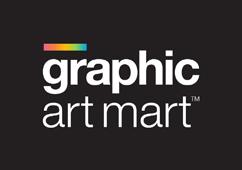


For a wrapping film that combines supreme performance and application speed, look no further than Avery Dennison Supreme Wrapping Film. This dual-layer film combines colour, texture, and clear protective
providing a smooth, paint-like finish that’s both durable and dazzling. For a limited time only, Graphic Art Mart is offering Image Magazine readers 25% OFF Avery Dennison Supreme Wrapping Film for those who purchase online. Simply use the coupon code GETITATGAMSWF at checkout.


Women in Print hosted a networking drinks function at Visual Impact in Brisbane. The event doubled as a fundraiser for Share the Dignity in the lead-up to the charity’s August Dignity Drive. Attendees included the National Board of Women in Print, women from print and signage shops across Brisbane, and exhibitors from the show floor. The event followed the 2024 AGM of Women in Print.
A Share the Dignity collection box was filled with donations on the night, including various period, incontinence, and baby care products. Stephanie Gaddin, Chair of Women in Print, gave a short welcome, thanking the Event Backers, Lettertech and Bounce LED for generously sponsoring the catering and drinks for the evening.

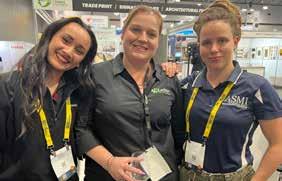

Following the event in Brisbane, Women in Print will support the Dignity Drive Fundraiser for Share the Dignity through August in Perth, Adelaide, and Melbourne.
“We’re thrilled to host the Dignity Drive Fundraisers through August and bring our Women in Print community together for an important cause. Share the Dignity does
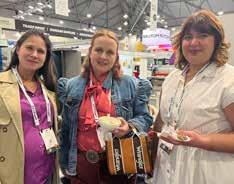
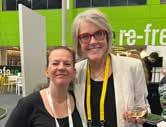
incredible work, and it is fantastic to see our industry rallying to support women in need. This is another opportunity for us all to connect, make a difference, and show the strength of our network.
I look forward to seeing our community contributing to this worthy cause,” says Gaddin.
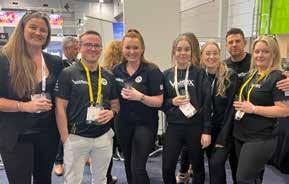

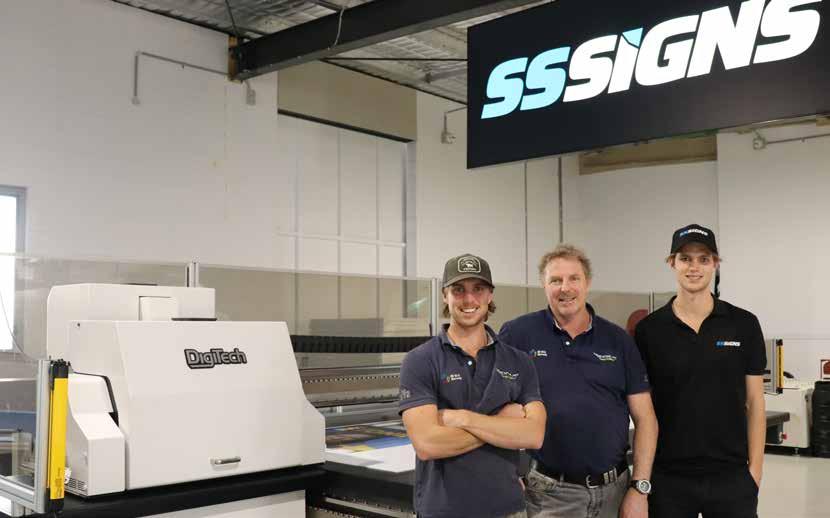
SS Signs , one of Australia’s leading signage companies, has taken its signage production capabilities to a new level by investing in a stunning new purpose-built head office production facility in Cleveland, Queensland. Not only have they invested in a leading-edge production facility, but they have also invested even more heavily in their people. With workflow and automation a focus, they have also recently installed Australia’s first Digitech TruFire LTX2 flatbed printer. Steve Lambourne , owner of SS Signs, shared his journey in an exclusive interview with Digital Image Magazine.
With over 3800 sqm of custom-designed, purpose-built signage manufacturing capabilities, SS Signs is a facility that is truly aspirational. A full-service signage company with eleven in-house installers, the company-owned installation kit includes two cherry pickers, two scissor lifts, a 22m all-terrain boom, crane truck, 2.5t excavator and a tilt tray, making them totally self-sufficient, a must as any project manager will attest to. SS Signs has in-house steel fabrication complete with cranes, gantries, and all the necessary fabrication and safety equipment, fabricating over 150 tonnes of steel per year and 30 tonnes of ACP. Combine that with a custom-built spray booth large enough to fit a B-double truck, and there is nothing too big for this facility to fabricate, spray or wrap.
When asked what inspired the design of the new production facility, Steve said, “It took me about a year to come up with the design after continually refining it based on my experience in other buildings and creating a space for what our future business looks like. We put installation at the heart of our business because when a job goes wrong, the installers often get the blame, and they’re the ones working at 4.30 am in the morning. So, we focus very hard on delivering our installation team the absolute best experience they can get. The installation bay where the trucks are loaded is in the centre of the building, where everything culminates. We ensure we have the right materials, the right people, detailed site specifications and job instructions, and that the truck is stocked straight from our installation bay, so no lost time running to Bunnings. As a result, we are now installing double what we used to install this time last year.”
Another key driver was to create a fantastic work environment for our staff because they are the most important part of our business, says
Steve. “These days, there are nowhere near as many people coming into the industry and through the ranks as there have been in the past. We employ eleven apprentices between Brisbane and Melbourne and focus very hard on their training and development as they are a massive part of our future. We employ many young people, especially since my two sons, Luke, who runs operations, and Jake, who runs installation, have joined the business as all their mates end up working for us. We find that we’re not looking for signage people so much anymore, but we are looking for young, hands-on technical minds that can operate computers and the latest flatbeds and cutting technology, which then frees up the workload from the more experienced staff to create the time and space teach the young people what to look for as they haven’t learned that eye for detail yet.”


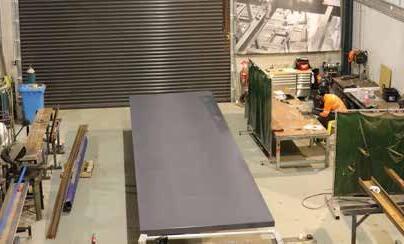


“A great example of this is Glenn Clark, who has worked for my family for the last 46 years and was my tradesman when I did my apprenticeship. He has worked solely on transferring his knowledge to our apprentices for the last two years before his recent retirement. Our apprentices have taken out first, second, or third at the last three ASGA awards, which we are really proud of.”
Asked how he got into the business, Steve responded, “I’ve been in it all my life, it’s all I’ve ever known. Skreencraft was founded by my parents in 1972 in Tingalpa. After working for Mum and Dad for about 16 years, I decided I wanted to do my own thing, so my wife Selina and I started SS Signs in 2006. Initially, SS Signs did a lot of trade work for vehicle wrap installations. Within six months, we had grown to have four staff dedicated solely to vehicle wraps, eventually growing the company to a team of ten people to become one of the leading signage companies in Brisbane. Since then, most of our growth has been through acquisition, which started when Mum and Dad retired and we bought out Skreencraft in 2017. Our continued growth came from acquiring the experience of other sign companies, including Civic Media, Brand Productions and Vehicle Wraps Australia. We also diversified into 3D and grand format printing. To help broaden our reach and better serve our national customers, SS Signs moved into Melbourne through the acquisition of Glenbrae Signs in early 2023 and expanded by opening a new factory in Kilsyth, Victoria.
“Another key feature that has underpinned our growth is our investment in workflow automation and equipment that is fit for purpose. We recently installed Australia’s first Digitech TruFire LTX2 printer paired with a 6m long conveyor and Aristo cutter, which is printing and cutting more than 60 8’ x 4’ sheets an hour with a single operator.
“The Digitech met our needs in terms of weighing up speed, quality and price. We particularly liked how they have simplified the electronics and inner workings of the machine to make an industrial printer as bullet proof as possible so that if we needed to, we feel comfortable fixing it should something go wrong. We’ve also been impressed by the service from both Digitech and Celmac. The installation was really seamless. The unit was delivered at 9 am, unboxed, and up and running later that day. Digitech sent someone out to spend two weeks with us and Celmac training us on the unit. In addition, Celmac has sent two of its technicians to the US for further training.
“The impact on the business has been massive. We were secondguessing ourselves for the first two weeks, thinking we didn’t have much work on, but what was actually happening was that we were outputting all of the work that would go onto our flatbeds in two hours instead of running a printer all day. It has significantly increased our capacity, which we need in order to achieve our growth targets,” concludes Steve.
Wayne McIntyre, owner of Celmac said, “It’s been a fantastic venture partnering with Digitech over the past three years as they have extended their product range, with a singular focus on producing the latest technology in printing, combined with more efficient workflow to save labour costs, but at the same time increase quality output for print service providers.
“This has now become a reality in Australia with the installation of the first printer direct to cutter Digitech solution installed into the new state of the art sign shop at SS Signs Queensland. Steve Lambourne and his team have been perfect partners for leading the implementation of this innovative workflow solution across the sign, wide format, graphics market, enthusiastically embracing the latest technology and the power that it gives,” concludes Wayne.
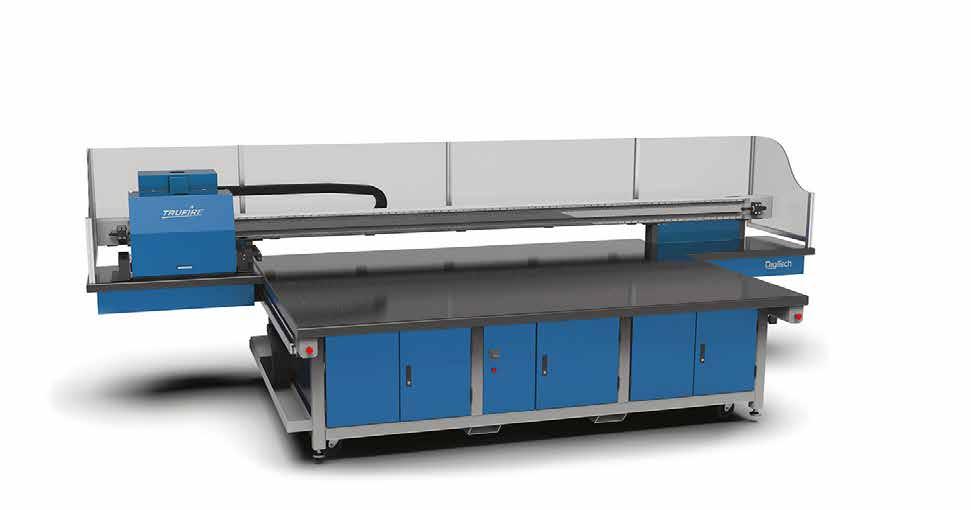

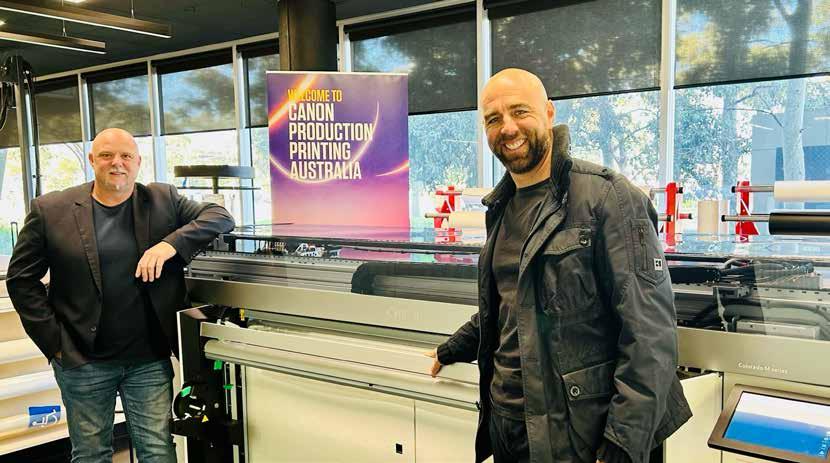
ADS Australia has recently expanded its capabilities by investing in a Canon Colorado M5W printer. Partnering with Currie Group for this purchase, ADS Australia aimed to enhance its production efficiency, print quality, and overall customer satisfaction.
Established 23 years ago, ADS Australia started as a small screen-printing business. Over the years, it has become a key player in the digital printing market, serving various industries with a broad range of printing needs. Known for its commitment to quality and innovation, ADS Australia continuously invests in the latest technology to meet clients’ evolving demands. The company is also committed to sustainability, continuously working to recycle as much material as possible, including paper and plastics. This commitment to eco-friendly practices is increasingly important to their clients and has become a significant aspect of their business operations.
Dean Wright, Managing Director and founder of ADS Australia says the company’s decision to purchase the Canon Colorado M-series printer was driven by its need to keep up with increasing workloads and the market demand for high-quality, fine-text prints. According to Wright, their existing ageing printers could no longer handle some projects’ volume and specific requirements, particularly those involving smaller stickers and bespoke signage work.
Thanks to Currie Group’s expertise, the printer installation was remarkably smooth. “The machine and technician arrived on the same day, and within hours, they had efficiently unpacked and positioned the printer in place, configuring and automatically calibrating it without any hitches. The technician demonstrated extensive knowledge about the installation process, showcasing the
high level of expertise and professionalism that Currie Group consistently brings to their service. They ensured everything was executed smoothly. It is always a pleasure interacting with anyone from Currie Group,” observes Wright.
Only one minor challenge occurred at the installation: integrating the EFI Fiery RIP software with the Colorado. This was partly due to ADS Australia being among the first in the world to use this combination of software and new hardware. Despite the initial learning curve, the support from Currie Group, particularly from their technical expert Alex Bloch, ensured that the setup was completed successfully.
Wright further emphasised the strong relationship with Currie Group, saying, “The consistent and reliable service provided by Currie Group has reinforced my trust and overall business satisfaction.”
“We have come to know and trust Dean and the entire team at ADS through their support of Currie Group in producing the graphics for both PacPrint and our Melbourne Demonstration Centre. It’s great that we have been able to further strengthen the relationship with the installation of the new Canon Colorado M5W which adds additional application diversity for ADS, to an already impressive product offering,” adds Paul Whitehead, Business Unit Manager – Sign and Display, Currie Group.
Since its installation, the Canon Colorado M5W printer has exceeded expectations.
It has delivered superior print quality, especially in fine text and high-end imagery, which has been particularly appreciated by clients requiring high-resolution art prints and smooth UV images without raised textures. The printer’s ability to produce reverse-printed white stickers and CMYK banners with high precision has significantly enhanced the company’s product offerings.
Wright also notes that one of the standout features of the Canon Colorado M5W is its reliability and efficiency. The printer can operate unattended for extended periods, allowing for overnight printing and reducing the need for constant supervision. This has led to increased productivity for ADS Australia and the ability to meet tight deadlines without compromising quality.
Highlighting the long-standing relationship with Currie Group as a key factor in their decision to purchase from the distributor; and having previously collaborated with Currie Group on various projects, including their stand at Melbourne’s PacPrint event, Wright was confident in their service and support capabilities.
The addition of the Canon Colorado M5W printer reinforces ADS Australia’s position as a leader in digital printing and shows that it is ahead of the curve in adapting to market demands. With enhanced capabilities, superior print quality, and the reliable support of Currie Group, ADS Australia is well-equipped to meet the growing needs of its diverse client base.
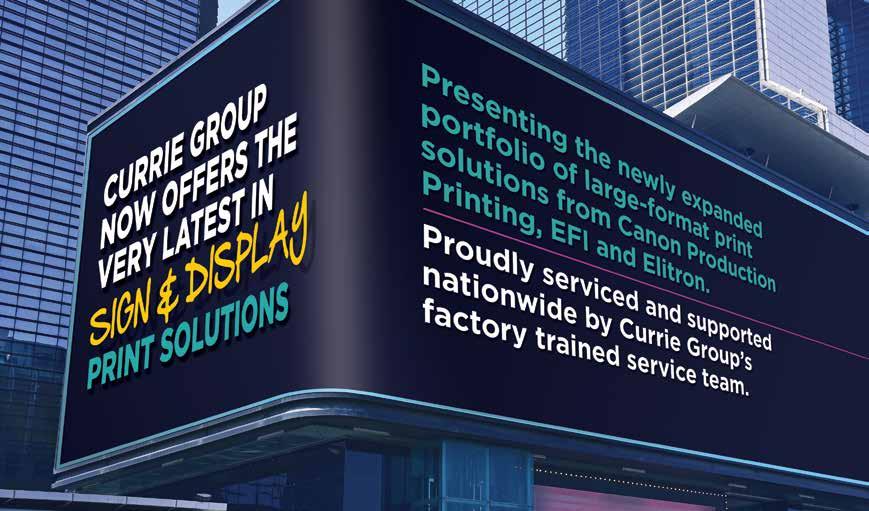

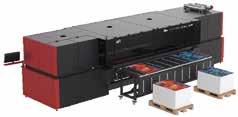
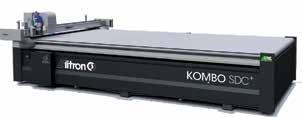


Lightforce Group was founded in the early 1980s, incorporated in 1995, and is now a global enterprise and an Australian success story. At the helm is Dr Ray Dennis , who, together with his management team, sets the tone for the precision manufacturing and cutting-edge product development that has seen them forge an international reputation as one of the world’s leading manufacturers of innovative lighting equipment and riflescope optics.
With a broad range of technical and intricate products under their remit, Lightforce Group has honed its expertise in adding value, creating differentiation, and delivering the highest quality of its products and services. R&D is key to Lightforce’s ongoing success, allowing them to stay ahead of their competitors and exceed customers’ demands.
When their local UV print suppliers became too busy to meet their fast turnaround demands on new product design iterations, Lightforce Australia didn’t hesitate to buy their own Roland DG LEF2-300 Benchtop UV Printer to bring their work in-house.
Mark Reina, Senior Design Engineer at Lightforce Australia says “Our dealer was very helpful in sourcing the machine and provided a lot of procurement support. The cost of purchasing it, along with the benefits of controlling the printing process, offered us many benefits.”
Their UV printer is already proving its value, adding distinction to their lighting products without compromising the durability of the products’ coatings. In keeping with their innovative ethos, Lightforce Australia has recently launched a cornerstone product in their product line that uses their UV printing technology, where UV printing

has never been applied to aux driving lighting products before.
Reina concludes, “The machine has been reliable and the quality from it has been great. It’s robust and reliable and well suited for industrial manufacturing.”
UV Printing technology offers users direct-printing capabilities onto a virtually limitless choice of three-dimensional media and objects. In addition to supplying technology for product customisation, Roland DG offers a range of large format and desktop UV flatbed and UV print/cut devices. These are machines for customising and creating unique graphics products with a quick turnaround.
To learn more about our extensive range of UV printing devices, visit https://www.rolanddg.com.au/uvprinting
The detailed Customer Success Story can be viewed on the Roland DG website at https://www.rolanddg.com.au/gallery/casestudies , which includes testimony from Lightforce Australia as to how integral their LEF2-300 Benchtop UV Printer is to their new product development.



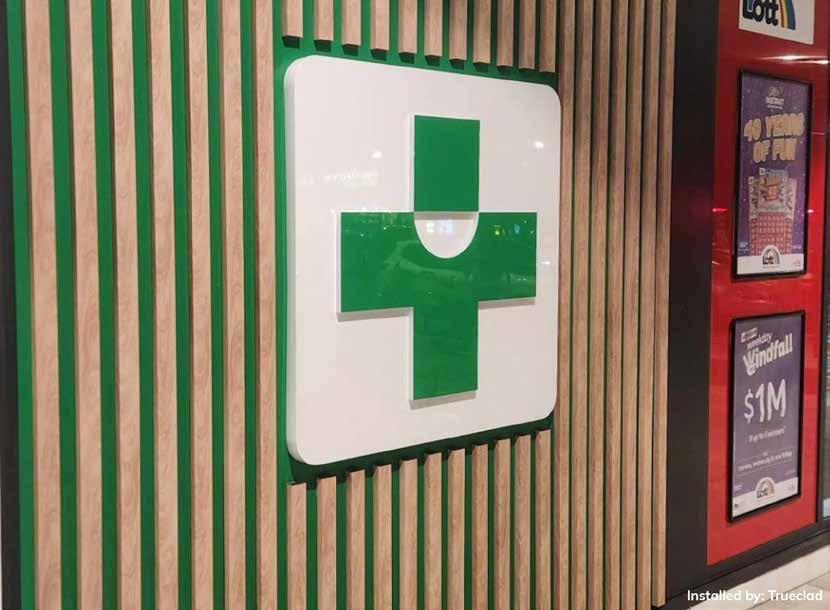
In the dynamic fields of signage, fit-outs, and architecture, the importance of creativity in utilising physical space continues to be a key driver. This is especially relevant in industries where visual appeal and functionality integration are paramount. The Ai Panel (pre-finished solid aluminium panels) from SAS stands out as a medium uniquely poised to meet the various demands of these dynamic industries.
Traditionally, many signage and construction industries use a lower-cost aluminium composite material; however, as regulations are changed and more safety measures are implemented, this dramatically affects the signage and construction industries. Due to the varying combustibility of these commonly used polymer/mineral core panels, more stringent regulations have been implemented. These particularly impact the construction industries, with requirements to ensure safety during and after production. We are now seeing these regulations and restrictions also affect the signage industry.
Amid regulatory complexities, many large shopping centres, for instance, now enforce restrictions, mandating that any materials used as wall linings must be non-combustible and meet required fire compliance regulations. SAS Ai Panel emerges as the clear choice when prioritising aesthetics, practicality, compliance, longevity, and economy.
With its Group 1 non-combustibility, SAS Supplier Group’s Ai Panel ensures safer usage in any application. Ai Panel goes beyond mere compliance, offering lightweight yet durable marinegrade waterproof mould-resistant and batch-consistent panels. These panels cater to regulatory, physical, and mechanical requirements. Ai Panel provides a canvas for vibrant colours, intricate shapes, and captivating content, all while ensuring easy
workability and fixability. Ai Panel’s design versatility allows for correct application, enabling it to be repainted, reused, or recycled, offering sustainable end-of-life options.
SAS Supplier Group recognises the need for balanced inputs in the integrated power play of products and materials within signage, fit-outs, and architecture. A fusion of aesthetics, creativity, convenience, compliance, warranty, and economy is at the core of SAS’s comprehensive approach.
SAS’s products and materials pave the foundation for success. Enhance your project excellence with Ai Panel and embrace the pinnacle of aesthetics, compliance, and practicality. With product ranges encompassing ACP, acrylics, LEDs, rigid boards, digital media, display equipment, and the NCC-fire-rated NonCombustible Group 1 pre-finished solid aluminium – Ai Panel – SAS presents a comprehensive toolkit for creating unique, integrated, inspiring, and compliant projects.
For further information, don’t hesitate to contact SAS’s national customer service line at 1300 727 118 or visit the SAS website at https://www.sassignage.com.au/ and https://www. aipanel.com.au/. Independent verification of material suitability and compliance is strongly recommended through third-party qualified professionals or institutions.

Preston- based Sign and Fitouts is equipped to meet a wide range of signage needs, from Illuminated 3D Signs to Commercial Wallpaper. With a commitment to delivering high-quality signs on time and on budget, the company services businesses all across Melbourne, offering eco-friendly signage options that enhance brand awareness. Their recent work for Clark Rubber caught some attention in the Melbourne suburb.
Owned by Farshad Dehghani, the company aims to provide innovative and effective solutions in the signage industry. Clark Rubber in Preston engaged Sign and Fitouts to create a Custom 3D Shop Front Sign for their shop in a busy shopping centre. The Clark Rubber logo and branding are known for their bold mix of primary colours.
As always, when dealing with an established brand, colourmatching the original palette to either vinyl colour charts or paint colours can be challenging. The company used the Pantone Matching System (PMS) to recreate the original colours as closely as possible. The final product consisted of various layers of acrylic panels painted in different colours and coloured vinyl layered onto one another.

One challenge that arose during the project involved shopping centre regulations, which prohibited spray painting inside the shopping centre. Sign and Fitouts could also not use a roller painter to change the colour of the solid white aluminium panel cladding. The solution was to demolish the white cladding and redo it in yellow. The replacement cladding was wrapped with yellow vinyl; the outcome is an eye-catching shop front decorated with 3D Letters. This creative solution saved Clark Rubber thousands of dollars and resulted in a fast turnaround on the project installation.
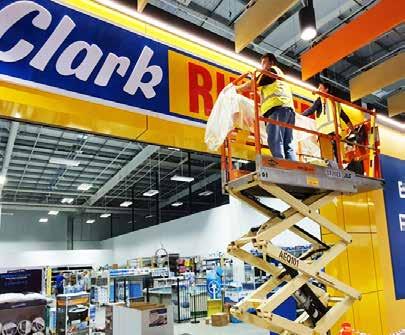
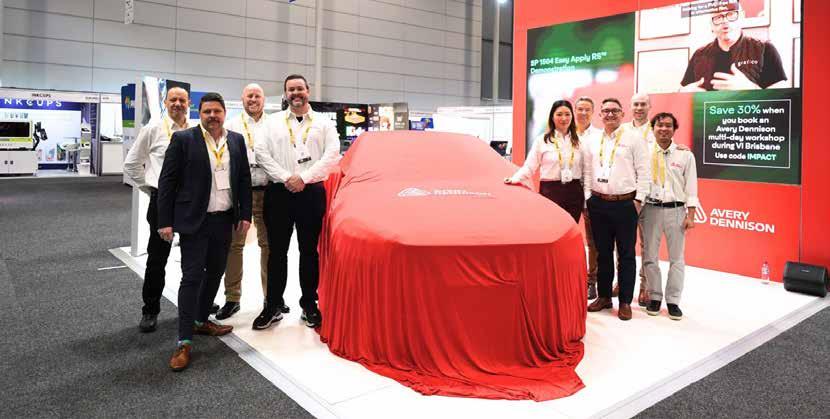
Visual Impact Brisbane 2024 marked a significant milestone for Avery Dennison as the company unveiled its innovative digital print film, SP 1504 Easy Apply RS. This new sustainable vehicle wrapping and corporate branding film drew considerable attention and praise at the the show. Avery Dennison’s participation as a gold sponsor of the Trade Show underscored their commitment to sustainability and cutting-edge technology in the Graphics Solutions industry.
The launch of Avery Dennison SP 1504 Easy Apply RS was highly anticipated at Visual Impact Brisbane 2024. This premium digitally printable, non-PVC film sets a new standard in sustainable wrapping solutions. The product’s official introduction to Australia and New Zealand featured live wrapping installation demonstrations, which drew large crowds and showcased the product’s performance and ease of application. The product’s unique blend of performance and sustainability received overwhelming positive feedback onsite, impressing seasoned professionals and new customers. After working with the new product, three clients gave their stamp of approval.
Damian Corney, Founder & Creative Director of Grafico, shared his experience with the SP 1504 Easy Apply RS. “Vehicle wrapping has always been a big part of Grafico, and we’ve partnered with Avery Dennison for almost 20 years. Our customers have been asking for a PVC-free alternative, and SP 1504 met our rigorous standards. It printed well, installed easily, and the price was comparable to traditional options. The transition was seamless, and the positive feedback from customers was immediate. This product has made a difference for us and our clients,” Corney said.
Avery Dennison Platinum Partner Liberty Signs’ recent project for “Who Gives A Crap” highlighted the practical benefits of SP 1504

Easy Apply RS. “We chose this new film for its sustainable advantage without compromising quality or price. This product matches the top industry options and delivers fantastic print performance on all major platforms. Becoming part of Avery Dennison’s Platinum Partner Program allowed us early access to the film, enabling us to deliver on this ambitious project with efficiency and flair,” a Liberty Signs representative noted.
Avery Dennison Platinum Partner Dzine Signs spearheaded a crucial project using SP 1504 Easy Apply RS to wrap six Park Ranger vehicles for a prominent New Zealand council. This choice markedly diminishes carbon footprint and excludes detrimental substances such as chlorine and phthalates. The council’s adoption of SP 1504 highlights their dedication to environmental stewardship in delicate areas. This initiative demonstrates innovative environmental impact reduction and establishes a fresh benchmark for sustainable vehicle wrapping practices.
Many other customers also provided positive testimonials, repeatedly noting the film’s consistent performance, ease of use, and negligible price difference compared to incumbent PVC-based films. This collective positive feedback reinforced Avery Dennison’s leadership in sustainable wrapping solutions.
Avery Dennison invites industry professionals to explore the future of sustainable wrapping solutions. Discover how SP 1504 Easy Apply RS can transform your business by visiting their website and experiencing the product firsthand. Embrace innovation and sustainability with Avery Dennison and lead the graphics solutions industry. Visit avydn. co/sp1504 to learn more and join the environmental revolution.




Spicers has added Neschen products to their expanding Visual Communications range. The partnership with Neschen brings an exciting array of innovative solutions designed to meet the market’s evolving needs. Spicers is now offering a selection of Neschen products with Easy Dot adhesive technology as part of this collaboration.
“We are incredibly excited to introduce Neschen products to our Visual Communications range. The Easy Dot adhesive technology is a game-changer, making installations remarkably easy and efficient, even for those without specialised skills. This technology significantly reduces installation time and ensures a flawless finish every time,” says Wayne Hood, Spicers Visual Communications Portfolio Manager.
Easy Dot adhesive technology is a standout feature of Neschen’s products. The innovative technology simplifies the installation process, making it accessible to users of all skill levels. The Easy Dot system features a unique adhesive pattern that creates air channels, allowing for easy repositioning and bubble-free application. This significantly reduces installation time and minimises errors, ensuring a perfect finish every time.
The range includes:
• Neschen Easy Dot Clear Frost: Ideal for creating eye-catching window graphics, this product offers a frosted effect that enhances privacy while allowing light to pass through.

• Neschen Easy Dot Matt: Perfect for temporary indoor displays, this film provides a smooth, glare-free surface that showcases vibrant graphics.
• Neschen Easy Dot PET Matt: This product is suitable for indoor and outdoor use and offers excellent dimensional stability and durability.
• Neschen Easy Dot Whiteout Matt: Designed for maximum opacity, this film is perfect for covering existing graphics or creating vibrant new displays without any show-through.
Easy Dot technology allows graphics to be applied and removed without leaving any residue, making it ideal for applications where graphics need to be changed frequently, such as retail promotions and trade shows.
Among the many products now available is the Neschen GUDY line, particularly the GUDY 802 and the GUDY Window. These products are formulated for signage applications, offering superior adhesion and durability. The GUDY 802 is ideal for mounting prints and photographs, while the GUDY Window is perfect for transparent and translucent films, ensuring vibrant visuals and robust performance.
Matthew Manteit, Neschen International Sales Manager, highlights the significance of this partnership for the Australian market, saying, “Partnering with a reputable brand like Spicers is vital for expanding our reach and impact in the region. This collaboration allows us to work closely with Spicers and their customers to deliver tailored solutions that meet specific needs. By combining our innovative products with Spicers’ market expertise, we are poised to make a significant difference in the visual communications landscape in Australia.”
Neschen is a key brand recognised for its unique range of high-quality products. Including Neschen in Spicers’ Visual Communications portfolio offers customers greater flexibility and choice, addressing the diverse requirements of the signage, display, and interior decoration markets.
Spicers is committed to supporting the evolving demands of the visual communications industry, and the addition of Neschen products is a testament to this dedication. With a focus on delivering superior quality, ease of use, and innovative solutions, the partnership will benefit customers by providing cutting-edge products that enhance their creative possibilities.

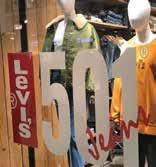
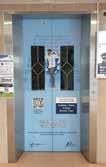


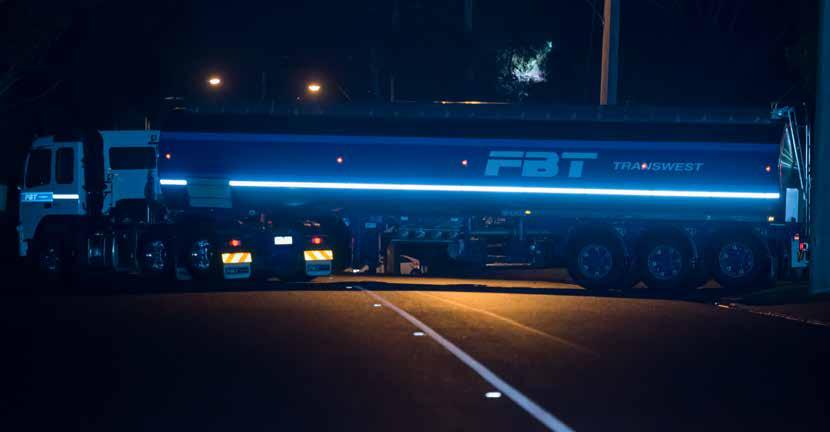
On 28th September 2023, the Australian Government released the Safer Freight Vehicles Package, increasing the allowed width limit from 2.50m to 2.55m for new heavy vehicles. This adjustment aligns Australia with Europe and the United States, where 2.55m trucks are standard. The change allows access to these regions’ latest generation of international and zero-emission heavy vehicles.


The Safer Freight Vehicle (SFV) reforms stipulate that any new truck 2.55m wide must be equipped with several safety features, including reflective markings, enhanced devices for indirect vision, electronic stability control, advanced emergency braking, lane departure warning systems, blind spot information systems for cyclists, and side underrun protection for vulnerable road users. These safety features aim to reduce the number of road freight trips, saving businesses money and lowering their environmental impact.
Heavy trucks account for only 2.4% of registered vehicles on our roads, yet they are involved in 16% of all road fatalities. The numbers indicate that 60% of those killed in heavy truck crashes are light vehicle occupants, with another 20% being vulnerable road users such as motorcyclists, cyclists, or pedestrians.
The trucking industry faces significant changes due to these new regulations. Companies must adapt to the latest safety requirements, ensuring their fleets comply with the updated standards.
3M offers a range of products to help the trucking industry comply with the new safety requirements. Their reflective markings and enhanced devices for indirect vision are crucial for improving visibility and reducing accidents. 3M’s electronic stability control systems, advanced emergency braking, and lane departure warning systems provide additional safety layers for drivers and other road users.
Moreover, 3 M’s blind spot information systems for cyclists and side underrun protection for vulnerable road users are designed to prevent common heavy truck accidents. These technologies can be seamlessly integrated into existing vehicles, ensuring compliance with the new regulations and enhancing overall road safety.
The Safer Freight Vehicles Package is a significant shift for the trucking industry; it emphasises the need for advanced safety features and aligns Australia’s standards with international norms. By investing in solutions from companies like 3M, businesses can comply with the new regulations, improve their operational efficiency, and contribute to safer roads for all Australians.
Federal Assistant Minister for Infrastructure and Transport Carol Brown emphasises the importance of these reforms, saying, “This Safer Freight Vehicles package responds to direct calls from industry to increase the width limit of trucks and follows extensive public consultation and feedback. These changes will be a real game changer for industry, businesses, and other road users, as they will save lives by adopting technology to reduce the likelihood of crashes while also lowering freight costs and supporting better environmental outcomes. Our truckies play a vital role in the Australian economy and our day-today lives, ensuring we can access the food, medicines, and other goods we need.”





Some professional relationships go deeper than a shared commitment to creativity and quality. When Drive Creative invited ORAFOL Australia and Canon Production Printing Australia to get involved in Cycle 4 Change, a harmony of values and collective energy for meaningful work carried the project over the finish line in style.
Over the last four years, working together across many different projects, the respect, trust and alignment between ORAFOL Australia and Drive Creative has grown and strengthened. The brands share fundamental values in terms of the way they work and a passion for projects that are meaningful and inspiring. The collaboration for Cycle 4 Change was undoubtedly one of those, and all were excited to get involved.
Cycle 4 Change is an annual cycling event for professional cyclists and newbies that raises money for Southern Cross Kids’ Camps. These yearly camps can be a life-changing experience for children who are exposed to neglect or domestic violence, giving them a safe and structured environment in which to make happy memories.
Belinda McInnes of Southern Cross Kids’ Camps says, “Cycle 4 Change is amazing. People are doing hard things and raising awareness and money to give kids from the toughest places the best week of their year.”
As an official sponsor for this year’s 4-day Gold Coast event, Drive Creative wrapped the support trailer to promote the event and the camps. Not only that, but Director Samantha Rogers decided to go the extra mile by getting on her bike and taking on the challenge herself, completing more than 400km of cycling over four days.
The over 25-metre wrap for the support trailer was a collaborative achievement. ORAFOL Australia supplied the media, Canon Production Printing Australia provided the printing on a Canon Colorado printer, and Drive Creative wrapped and installed the job as the experts in car wrapping.
Thanks to the established relationship, Rogers knew that the team at ORAFOL would be just as excited to throw their collective energies behind this wonderful cause. She also knew she could trust the company’s innovative products and premium materials to deliver the visual impact needed.
ORAFOL was delighted to provide the ORAJET 3951RA+ ProSlide print media and ORAGUARD 290 matte laminate to complete the trailer wrap; the Canon Colorado produced a vibrant, eye-catching livery. The ProSlide technology from ORAFOL makes this premium digital printing film easy to apply and reposition, while the laminate
offers excellent protection and a seamless finish.
Having completed ORAFOL courses to be a trainer and a certified installer, Rogers fully understands what sets ORAFOL products apart. She wanted only the best for this passion project, so she approached ORAFOL.
Both the project and the cycle were a huge success. Rogers raised over $2500 for Southern Cross Kids’ Camps through her fundraising page and found it a wonderful and uplifting experience.
McInnes says, “Sam was an absolute champion of the ride. She fought her way out of the hurt locker and was a real inspiration to us all – and the trailer wrap by Drive Creative looks absolutely amazing!”
Rogers adds, “Everyone involved, from the event organisers to the cyclists, support crew and business, made for a very passionate, supportive and motivated group of people.”
Like the cycle itself, the success of the trailer wrap was a true team effort. The impressive results would not have been possible without multiple creative and technical people working at the highest level supporting a great cause. This shared passion for making a genuine difference defined the collaboration.
It is a real win when you find like-minded industry partners in terms of passion and values. ORAFOL and Canon Production Printing Australia were the obvious choices for Rogers and Drive Creative because they know that the companies have a shared motivation to pursue projects that genuinely inspire and mutual integrity to deliver the absolute best on those projects.
Andrew Gowty of Canon Production Printing Australia proudly announced, “Over four days on the beautiful Gold Coast, we pedalled to raise an amazing $136,032 for the charity partner, Southern Cross Kids Camps. These funds will help make a positive impact in the lives of children who have suffered abuse or neglect.”
Drive Creative’s mission statement is to ‘Lead with Kindness’, and this event was an excellent opportunity for them to do just that while inviting trusted industry partners and friends ORAFOL and Canon Production Printing to contribute to the collaboration and generosity.
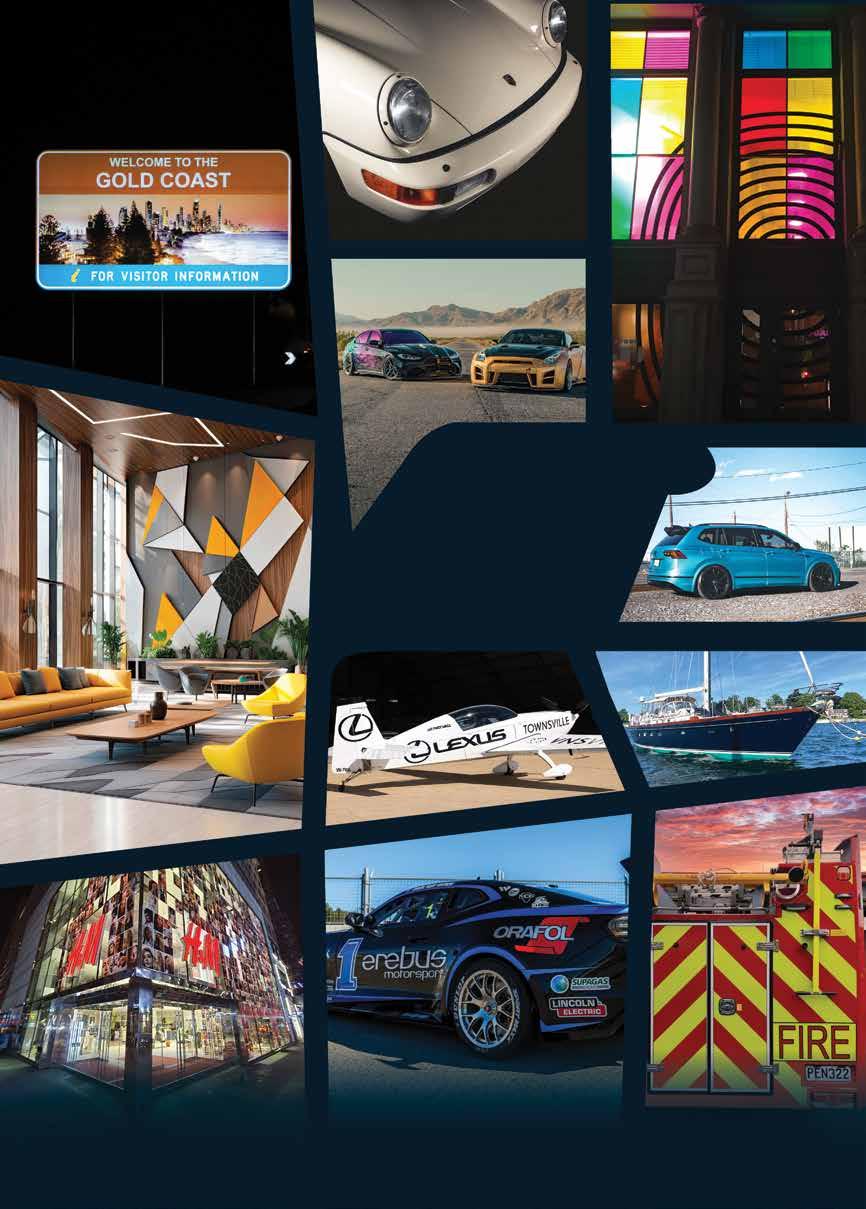
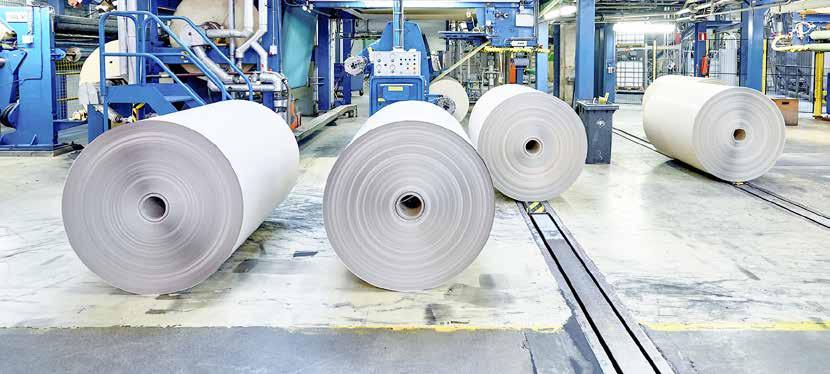
The Ball & Doggett partnership with Coldenhove brings cutting-edge dye sublimation papers to the Australian market. This collaboration introduces a range including Coldenhove JETCOL High Speed, HTR 3500, HTR 4000, HTR1000, and Jet-X, each designed to meet diverse printing needs with unmatched quality and efficiency.
Coldenhove, with over 350 years of papermaking expertise, is renowned for pioneering advancements in dye sublimation technology. Partnering with Ball & Doggett ensures Australian businesses access to these premium papers, aligning with Coldenhove’s commitment to excellence. Coldenhove’s products are Forest Stewardship Council (FSC) certified, reflecting their commitment to conservation and responsible forest management worldwide.
Coldenhove product range available at Ball & Doggett:
JETCOL High Speed: Engineered for high-speed printing, it offers quick drying, vibrant colour, and enhanced efficiency, ideal for largescale production environments.
JETCOL HTR 3500: Versatile and precise, it delivers superior print quality, wide colour gamut, and compatibility with various printers and inks, perfect for diverse applications.
JETCOL HTR 4000: Known for durability and consistency, it maximizes ink release, withstands industrial conditions, and maintains print quality across large runs.
JETCOL HTR1000: Specialized for high-definition prints with low ink consumption, it excels in fine art and intricate designs, ensuring clarity and detail.

JETCOL Jet-X: Incorporating advanced technology, it features ultrafast drying, eco-friendly composition, and top-tier performance for advanced printing needs.
Ball & Doggett’s distribution of Coldenhove papers empowers Australian industries with tools to elevate print quality, efficiency, and sustainability. This partnership not only supports innovation but also aligns with industry demands for superior printing solutions.
“We are dedicated to ensuring a reliable supply for our customers, and with our robust converting capabilities in Australia, we can provide custom lengths and sizes tailored to the sublimation market. By merging our expertise, we strive to deliver outstanding printing materials that not only meet but exceed our customers’ expectations,” said Rob Brussolo, GM for Sign Display & Digital at Ball & Doggett.
Embrace the future of printing with Ball & Doggett and Coldenhove Dye Sublimation Papers—where quality, efficiency, and innovation converge to redefine dye sublimation printing standards.
For more information and orders, visit Ball & Doggett’s website or contact your local representative. Join Ball & Doggett in transforming print technology and advancing sustainability practices across Australia.


Tradie Wraps showcases its expertise in vehicle wrapping with this Nuttelex full cab wrap. The project involved adapting a supplied concept to fit seamlessly onto a truck, a task undertaken by their in-house designer, Jake Chesson. Matthew Adams, owner of Tradie Wraps, says the key to designing for the back of a truck is ensuring that the design considers how the locking rods will obscure the view.
Using an HP560 latex printer, the design was printed on Avery 1105 wrap film and installed with an Avery 6460 laminate. These materials were selected for their durability and vibrant finish, which is essential for maintaining visual appeal in various weather conditions.
When installing the wrap, to overcome the challenge of the rods and rubber straps, the team removed the locking rods. This step not only facilitated easier installation but also ensured a higherquality finish. Adams notes that they always check with a truck

body builder to ensure that replacement security bolts can be sourced before starting the installation, as these occasionally need to be destroyed to be entirely removed. They must thus be replaced when the wrap is done.
This wrap’s bright and cheerful design was particularly enjoyable for the team. Great design always contributes to a successful result, and this project was no exception, leaving both the team and the client satisfied with the outcome.
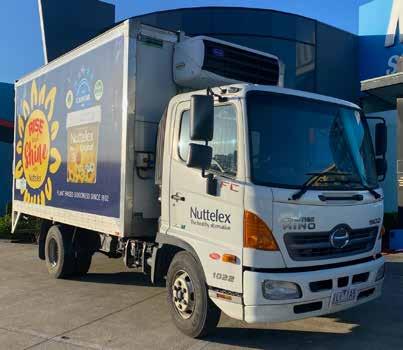


In 2023, Australians were swindled out of a staggering $2.74B by online scams, according to the ACCC. Businesses are prime targets for cybercriminals who continuously innovate their tactics to infiltrate security systems. These scams not only jeopardise sensitive data but also inflict financial and reputational damage. As cyber threats evolve, businesses must fortify their defences with robust measures. This article delves into online business scams and provides actionable steps to bolster cybersecurity.
Phishing Attacks: Phishing remains one of the most prevalent online scams. Cybercriminals send fraudulent emails or messages posing as reputable entities to deceive employees into revealing sensitive information, such as login credentials or financial details. These attacks exploit human vulnerabilities, such as trust and urgency, to achieve their goals.
Ransomware: Ransomware is malicious software that encrypts data, rendering it inaccessible until a ransom is paid. This scam can be particularly devastating for businesses, leading to significant downtime, data loss, and financial strain.
Business Email Compromise: These scams involve hacking or spoofing legitimate business email accounts to deceive employees into transferring funds or disclosing information. These scams often target high-level executives or finance departments, exploiting their authority to initiate fraudulent transactions.
Fake Invoices: Scammers send fraudulent invoices to businesses, hoping the recipient will process the payment without verifying its legitimacy. These scams exploit routine business operations and can result in financial losses if not detected.
Social Engineering Attacks: Social engineering involves manipulating individuals into divulging confidential information or performing actions that compromise security. This can include impersonating IT support to gain access to systems or leveraging social networks to gather information for targeted attacks.
To safeguard against these scams, businesses must implement robust cybersecurity measures. These include:
Employee Training and Awareness: Employees are often the first line of defence against cyber threats. Regular training and awareness sessions should be conducted to educate staff about the types of online scams and how to recognise them. Emphasise the importance of verifying the authenticity of emails, attachments, and links before taking action.
Implement Multi-Factor Authentication: This is an extra layer of security that requires users to provide multiple forms of identification before accessing sensitive systems. This can significantly reduce the risk of unauthorised access, even if login credentials are compromised.
Regular Software Updates: Ensure all software, including operating systems and security tools, are regularly updated. Cybercriminals often exploit known vulnerabilities in outdated software to gain access.
Data Encryption: Where possible, sensitive data should be encrypted in transit to protect it from unauthorised access. Encryption ensures that it remains unreadable even if data is intercepted without the appropriate decryption key.
Incident Response Plan: Develop and maintain a comprehensive incident response plan to address cyber incidents. This plan should outline the steps to take in the event of a breach, as well as communication protocols, containment measures, and recovery procedures. In Australia, there is a requirement that businesses will do all that is reasonably possible to minimise the effect of datarelated breaches.
Regular Security Audits and Assessments: Conduct regular security audits and assessments to identify and address potential vulnerabilities in your systems. These evaluations help you stay ahead of emerging threats and ensure effective security measures.
Invest in Advanced Security Solutions: Leverage advanced security solutions such as intrusion detection systems (IDS), intrusion prevention systems (IPS), and endpoint protection platforms (EPP). These tools can provide real-time monitoring and response capabilities to detect and mitigate threats before they cause significant harm.
Third-Party Risk Management: Assess and manage the cybersecurity risks associated with third-party vendors and partners. Ensure they adhere to stringent security standards and practices to prevent potential vulnerabilities from affecting your business.
The landscape of online scams is continually evolving, and businesses must remain vigilant. By implementing comprehensive and regularly updated measures and fostering a culture of awareness and preparedness within your workforce, companies can greatly reduce the risks these threats pose.
Charles Watson General Manager IR, Policy and Governance Visual Media Association



INTEGRATE: DIGITAL SIGN AND ENGAGEMENT EXPO
https://integrate-expo.com 21-23 August 2024
ICC Sydney, New South Wales
NZ PROMO SHOW
https://appa.com.au
2 September 2024
Chateau on the Park, Christchurch, New Zealand
CURRIE GROUP 2024 NATIONAL SIGN & GRAPHIC AWARDS
https://signs.org.au
6 September 2024
Doltone House, Hyde Park, Sydney
PRINTING UNITED
https://www.printingunited.com 10-12 September 2024
Las Vegas Convention Center, Las Vegas, Nevada, USA
PRINT & PROSECCO NETWORKING WITH WOMEN IN PRINT
https://womeninprint.com.au
September & October 2023
Brisbane, Sydney, Melbourne, Hobart, Adelaide, Perth, Canberra
ASGA VIC GOLF DAY
https://signs.org.au
2 October 2024
Sandhurst Golf Course, Sandhurst, Victoria
IMPRESSIONS EXPO: FORTH WORTH
https://impressionsexpo.com
24-26 October 2024
Forth Worth Convention Center, Forth Worth, Texas, USA
IMPRESSIONS EXPO: LONG BEACH
https://impressionsexpo.com
23-25 January 2025
Long Beach Convention & Entertainment Center
Long Beach, California, USA
IMPRESSIONS EXPO: ATLANTIC CITY
https://impressionsexpo.com
20-22 March 2025
Atlantic City Convention Center, New Jersey, USA
DENISE KIRBY
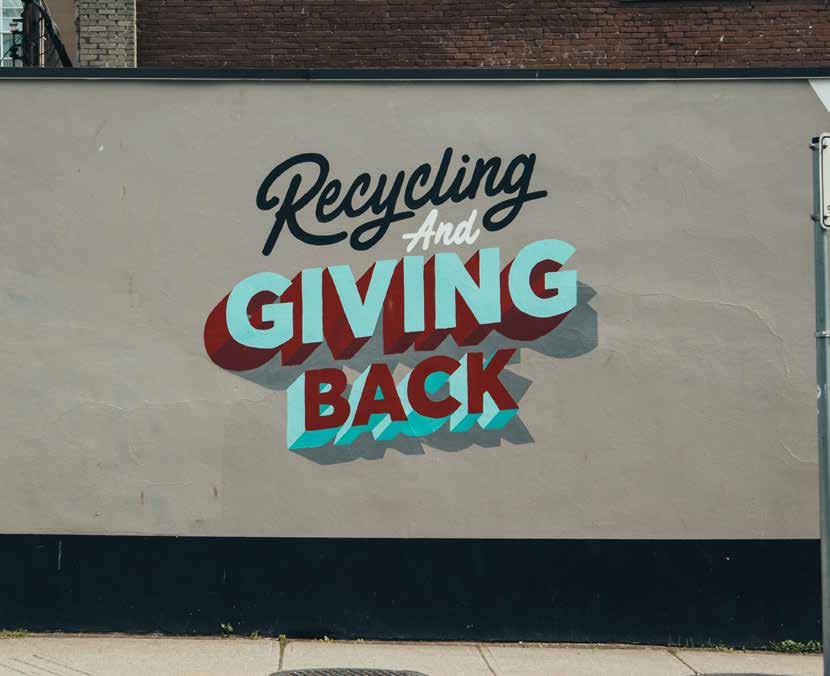
Gone are the days of sustainability being seen as an unaffordable luxury. In the past products and services that benefited the planet were often prohibitively expensive, but today the landscape has shifted and sustainability is an affordable necessity. Going green is not only environmentally responsible, it also makes good business sense.
Numerous studies have confirmed that the modern consumer prefers more eco-conscious brands and that their purchasing decisions are heavily influenced by these values. To connect with consumers and drive profitability and growth, businesses need to cater to what their customers want and sustainability is an increasing demand.
Many brands and businesses are adopting sustainable practises and actively promoting these commitments to their target audience as a powerful way of increasing revenue and gaining customer loyalty. It makes sense that these businesses would want the materials used for their branding or promotional graphics to also align with their sustainable values.
This represents not only an opportunity, but an increasing necessity for the sign and print industry to adopt practices and offer materials that are less impactful on the environment.
With sustainability being such a key driver why is it that not all sign and print companies are diving in head first and addressing this issue within their own business?
“We can’t afford it”, “Our customers won’t pay for it” or “None of our customers are asking us about it” are objections I often hear in the marketplace.
“WE CAN’T AFFORD IT”
It is understandable that in the current climate, companies can be hesitant to invest in new initiatives. The Covid pandemic was highly disruptive to businesses and created a climate of uncertainty and instability. The market is still cautious and when business and economic conditions aren’t buoyant, it may not feel like the right time to be changing materials and processes.
Integrating sustainability into your core business can, however, increase growth and profitability. Adopting a greener mindset in the workplace can lower costs, reduce the waste of resources and create new opportunities.
Going green doesn’t have to involve expensive initiatives like installing solar panels, changing your fleet to electric or buying a new printer. There are lots of easy and cost- effective changes you can make. Things like saving energy, using resources more efficiently, reducing waste, recycling and more efficient supply chain management are all ways you can improve your environmental footprint. Sustainability is a very broad term that is simply defined as something that “meets the needs of the present without compromising the ability of future generations to meet their own
needs.” Being green is about doing more with less. If you save on resources and improve efficiencies you can actually save your business money.
Companies who invest in sustainability want to deal with companies who also share and demonstrate the same values. This creates more opportunities for your business to service existing clients and attract new ones.
The good news is that there are plenty of studies that show consumers are absolutely willing to pay more for ethical and sustainable brands, products and services provided the price differential is not extreme. Just like quality and service have value when it comes to price, sustainability is also a benefit that adds value. Here, transparency goes a long way in justifying price. If the customer can directly see the value they are getting from any additional cost, then they will pay for an eco-friendly alternative.
When it comes to green media, not all products are more expensive than traditional media. Prices have lowered considerably and PVCFree alternatives can be very cost effective.
Ultimately, it’s up to your customer. You can give them a choice. In the same way when you travel by air you have the option to pay a surcharge to offset you carbon emissions, consider offering a sustainable alternative when you quote for projects. You may be surprised at what your customers choose.
“NONE OF OUR CUSTOMERS ARE ASKING US ABOUT IT”
It is all about awareness and education. Just because customers are not asking, doesn’t meant they don’t want it given a choice. Customers don’t always know what is available or they may be unaware of the materials you are using and their impact. It is our job to educate. Businesses that don’t communicate new options and innovations in this area could well lose out to businesses that do. I have seen many advertisements promoting sustainable products and services printed onto PVC where alternative media could have easily been used. It makes sense that as brands and retailers respond to their customer’s demand for eco products and promote the eco credentials of their products or services, that they will want to do so in a way that is also sustainable. Printers who introduce sustainable products that align with their customers values will win business.
Sustainability is not a short-lived trend. It will continue to grow and become an integral part of doing business. Customers want to do business with companies who share their values. Going green is a key strategy for growth and profitability as well as remaining relevant and competitive. The time has come for sign and print companies to educate their customers and lead the way in sustainable practices to remain competitive and future-proof their businesses.
KIRBY

DENISE KIRBY has nearly thirty years’ experience supplying self-adhesive media to the sign and print industry. Initially starting out in the family business as a distributor, she went on to work for leading self-adhesive manufacturers in marketing, business development and product management roles across Australia and New Zealand. She now has her own business, Kirbyco, which develops and supplies eco-friendly, recyclable and sustainable print media, and created ZERO, a product stewardship scheme which recycles end of life printed media. Denise is highly passionate about the industry and enjoys writing about applications, opportunities and new developments in print and signage. Her goal is to inspire people to explore new creative, functional and sustainable opportunities in print as well as educating the industry on products, trends and innovations.


My last article was titled “Cash is King.” If that is true, then “space” must certainly be Queen.
Space is a common struggle for all of my consulting clients. One client, located in the picturesque Sunshine Coast area of Queensland, was particularly challenged by this. However, he didn’t let this hinder his operations. Instead, he became a master of utilising every square millimetre, showcasing the best use of space I had ever seen. His success story is a testament to the possibilities of efficient space utilisation. However, as his business became more efficient, he’s recently purchased or rented another factory for the dirtier aspects of steel and paint, further expanding his operations.
Another client, grappling with the space challenge, made a strategic and pragmatic choice. He rented a factory a few doors down, which conveniently came with a gantry crane for his sizable steel shop. This decision was not just about resolving his space problem but also about equipping his operations with a valuable asset. His decision-making process is a prime example of how strategic space management can yield significant operational advantages.
During our business journey, most of us face the challenge of space and how to best use it to maximum operational efficiency. However, at some point, we will face the dilemma of whether to move or stay and deal with it.
We built our first factory and owned the adjoining land to build and rent as an investment. When my business grew, and cash flow increased, we built that adjoining factory and put a for-lease sign out front. While waiting for a tenant, we used the spare empty factory and stored finished signage, vehicles, and stock there.
When we utilised our spare factory for storage, a remarkable transformation occurred. Our efficiencies skyrocketed. We no longer had to unstack sheets of ACM or acrylic to find the right colour, thickness or size. We didn’t need to move work around to lock vehicles up at night, and the team commenced work as soon as they arrived rather than moving things to create a workspace. As the stars
seemed to align, we hadn’t found a tenant after 3-4 months, but our turnover and profit soared. The efficiency of space and a wellorganized workshop spoke volumes on their own. This success story is a testament to the potential benefits of efficient space utilisation, inspiring us to rebrand the adjoining building into the company livery and remove the “for lease” sign.
We then grew rapidly and needed to set up our own steel fabrication. We employed a steel guy and purchased the essential guillotine, folders, welders, etc. This adjoining factory now housed a steel shop and stock. Before long, we needed more salespeople and built offices. We were screaming for space again within a few short years as our efficiencies dropped. That lesson I learned still sat at the front of my mind, and I did something I swore I never would: we purchased a factory several kilometres away and relocated our steel shop. It’s not ideal, but efficiencies increased again, but not to the same level as previously. An offsite facility can be challenging. Around 2009, a large 3,000sqm factory came on the market around the corner. We purchased this and moved both entities into the new massive space. We left behind from a total of 1,400sqm, and the new factory looked empty even after we had moved in.
However, our early experience was prophetic, and again, efficiencies, turnover, and profit soared like an eagle on a high thermal current. We filled that space entirely over the next 10 years, but we built it well with space and storage for everything.
It didn’t mean we weren’t challenged by the normal variances of business life, such as political and financial peaks and troughs. We needed to manage the team numbers and roles, but the added space allowed us to be brutally efficient. Departments were clearly defined and separate. It wasn’t a perfect building, as it had more office space than we needed, but we utilised those areas for clean works, print, vinyl, office, and storage.
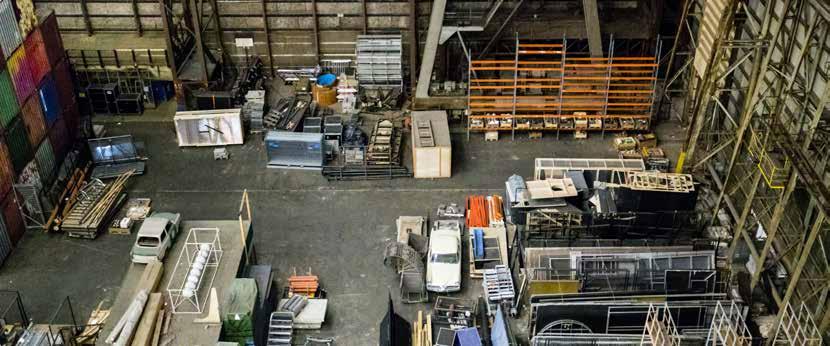
“It is a massive decision to relocate your business. It is expensive, messy, disruptive and stressful.”
This article aims to help you understand the significant impact of lack of space on your efficiency, not to mention or understate the frustrations your team experiences working in messy, confined spaces. It is a massive decision to relocate your business. It is expensive, messy, disruptive and stressful. But, if you’re looking for a long-term goal, then consider it carefully. Look at locations and opportunities.
I recall, as an apprentice at trade school at the old Melbourne College of Decoration (who came up with that name?), my lecturer describing one of his former workplaces, one of Melbourne’s largest sign companies back then, which was situated on a major Melbourne thoroughfare. For the reasons this article covers, they relocated to a much bigger facility, but down the back streets, with no “visible” exposure. As a result, their “walk in the door” business evaporated.
I always remembered this story, and when we built in Malaga in the northern Perth commercial corridor, I chose a corner location. It was so expensive that we never thought we could afford the land, let alone build on it. My accountant gave us a huge metaphoric hug and told us we had a good business but were restricted because of our current location. We borrowed so much money I swear I couldn’t sleep for months. Eventually, we moved into a location with 32,000 vehicles passing, and within 6 months, the walk-in-the-door business was paying the entire mortgage. The other benefit of a high-profile location was everyone soon knew us. Soon, major businesses would drop in as they passed our facility daily. You cannot underestimate the benefits of location for your business. However, I do accept “walk in the door” work may not be in your comfort zone. It can be smaller work, annoying or difficult. But bugger me, it’s also bloody good cash flow which negates any other negativity in my book, and I refer to last month’s title, “Cash is King.”
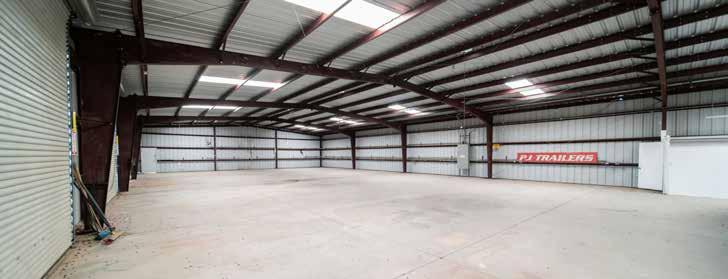

VERNON KINGMAN is a highly respected and prominent figure in the signage industry. He is known for co-founding Kingman Visual in Perth with his wife, Dianne, in 1984. Starting from their garage, the business grew into one of Australia’s leading signage companies, known for major projects such as Perth’s Optus Stadium and the largest sky sign in Australia at St John of God Murdoch Hospital. In 2020, Vernon sold the company. He remains active in the industry as a consultant, continuing to influence and support other businesses in the field.

Small businesses face unique challenges in standing out and thriving. One of the most powerful yet underutilised tools at their disposal is data. Small businesses can make informed decisions that drive sales and foster growth by utilising business data and analytics, interpreting sales data, and employing the right tools and techniques. Additionally, understanding the numbers in your sales process is crucial for securing new business. Here’s how you can transform your sales strategy into a data-driven powerhouse.
Big data isn’t just for large corporations. Small businesses can harness the power of data analytics to better understand their market, customers, and sales trends. By collecting and analysing data from various sources, such as customer interactions, sales records, and market trends, you can uncover patterns and insights that inform strategic decisions. According to McKinsey, data-driven organisations are 23 times more likely to acquire customers and 19 times more likely to be profitable – https://www.mckinsey.com/ capabilities/growth-marketing-and-sales/our-insights/five-factshow-customer-analytics-boosts-corporate-performance
Of course, that sounds good, but what data should you capture, analyse, and act on?
Start with analysing your customer data. It can reveal buying habits and preferences that allow you to tailor your product offering and marketing efforts. Suppose you notice a particular product or service is popular among a specific demographic. In that case, you can target that group more aggressively with personalised marketing campaigns and potential add-on or upsell opportunities. Next, consider developing a deeper understanding of seasonal trends. This can help you plan inventory and staffing more effectively, ensuring you are well-prepared for peak periods.
Collecting data is only the first step; the real value lies in interpreting it to extract actionable insights. Surprisingly, many small businesses struggle to provide basic sales numbers quickly, often making decisions without fully understanding their data. Here are a few steps to help you turn raw data into meaningful business strategies:
• Segmentation: Break down your sales data into segments based on various criteria such as product type, customer demographics, and geographic location. Apart from being exciting and good to know, this segmentation information allows you to identify which areas are performing well and which need attention.
• Sales Cycle Metrics: Track metrics such as average deal time, conversion rates at each stage of the sales pipeline, and the average value of deals closed. These metrics provide a clear picture of where you can improve and where you are excelling.
• Trend Analysis: Look for trends over time in your sales data. Are there certain months when sales spike or dip? If so, why? Are there new products or services that are gaining popularity? What is driving that?
Understanding these trends helps you proactively adjust your sales strategy and potentially open up new categories of buyers you aren›t currently targeting or satisfying.
• Performance Metrics: Establish key performance indicators (KPIs) such as your sales growth rate, customer acquisition cost, and lifetime value. Regularly monitoring these KPIs enables you to gauge the effectiveness of your sales strategies and service levels and, if necessary, make adjustments.
Several tools and techniques can help small businesses track and measure sales performance effectively. Here are a few that stand out:
• Customer Relationship Management (CRM) Systems: CRM systems like Salesforce or HubSpot are commonplace and essential to any business, large or small. An effective CRM can help you manage and track customer interactions, track purchasing history and analyse customer data. These platforms
provide valuable insights into customer behaviour and sales trends, allowing you to tailor your sales approach.
• Additionally, by choosing the right CRM, you can streamline the data collection and reporting process. By setting up automated reports, you can receive regular updates on your sales performance without manual intervention, freeing up time to focus on strategy and execution.
• Sales Analytics Software: Tools like Tableau or Power BI enable you to visualise sales data and generate detailed reports. These platforms make it easier to spot trends, compare performance across different segments, and make informed decisions based on real-time data.
• A/B Testing: Implement A/B testing to experiment with different sales strategies or marketing campaigns. By comparing the performance of two approaches, you can identify which one yields better results and refine your strategy accordingly.
While a CRM can significantly enhance your data-driven sales strategies, not all small businesses have the resources to invest in one. Here are some practical alternatives to manage your sales data effectively:
• Spreadsheets: Use tools like Microsoft Excel or Google Sheets to create and maintain databases of customer information, sales transactions, and other relevant data. While not as sophisticated as a CRM, spreadsheets can be customised to track various metrics and generate reports.
• Email Marketing Platforms: Tools like Mailchimp or Constant Contact can help you manage customer communications and
track engagement. These platforms often include basic customer management features and analytics to monitor the effectiveness of your campaigns.
• Cloud Storage: Store your sales data in cloud services like Google Drive or Dropbox. This ensures your data is accessible from anywhere and easily shared among team members. You can organise files by categories such as customer type, sales period, or product line.
• Manual Tracking: Develop a systematic approach to manually track sales activities. Use a combination of physical logs, calendars, and digital documents to record interactions, followups, and sales outcomes. Regularly review and analyse this information to identify trends and opportunities.
• Free or Low-Cost CRM Alternatives: Explore free or budgetfriendly CRM options like Zoho CRM or HubSpot CRM, which offer basic functionalities that might be sufficient for your needs without a significant financial commitment.
By embracing a data-driven approach, small businesses can make more informed decisions, optimise their sales strategies, and ultimately drive growth. Harvard Business Review notes that companies leveraging data outperform their competitors by 6% in profitability and 5% in productivity – https://hbr.org/2012/10/bigdata-the-management-revolution
The key is to start small, gradually build your data capabilities, and consistently apply insights to your sales efforts. With the right tools and mindset, you can confidently turn data into your most valuable asset and secure new business.
Small business success hinges on effective selling, and in today’s competitive landscape, mastering selling fundamentals is paramount
Introducing Selling Fundamentals for Small Business™ –a comprehensive program designed to equip you with the foundational selling skills necessary to consistently excel in your sales endeavours
C O M P L E T E W I T H :
Theory based sales knowledge customised for small business
Activities & worksheets for you to work through at your own pace




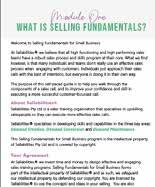


Businesses often wrestle with the question: “Am I wasting money on paid social or internet advertising ads?” While these platforms offer detailed reach and sophisticated targeting options, they also pose challenges that can lead to wasted resources if not managed correctly. This article will explore how to determine if your advertising efforts are effective, whether you should stop specific campaigns, and what might be missing from your marketing funnel.
Paid digital advertising, especially on Meta, has revolutionised how businesses reach their audiences; radio or TV placements can be replaced with more affordable options that now exist. The issue is that not all campaigns yield positive results. Here are some common pitfalls that can lead to wasted ad spend:
1. Poor Targeting: One of the most significant advantages of platforms like Meta Ads is their advanced targeting capabilities. We are no longer talking to the masses. If your targeting is narrower or misaligned with your ideal customer profile, you can easily save money on clicks that do not convert. The same can be said if it is too specific. Sometimes, we think we know exactly what the target audience wants or who they are. We get so emotionally invested in this idea that we miss the bigger picture.
2. Misleading Ad Creative: Your ad creative must meet your target audience’s expectations and needs. If your ad is not engaging or misleading, it will fail to capture interest. The same goes for overpromising with a clickbait-style; it will get you clicks that won’t convert.
3. Improper Landing Pages: The landing page is where the magic happens. You are throwing money away if it does not deliver on the ad’s promise or is not optimised for conversions. An example of this is running an offer of a discount code for a printing service and directing users to a “Contact Us” or “Quote” page. The mistake here is that the audience cannot apply the discount code, creating a disconnect between the ad and the landing page.
You must monitor and analyse your campaigns continuously to avoid wasting money on paid ads. Here are the key metrics:
1. Click-Through Rate (CTR): A low CTR indicates that your ad creative or targeting might be off. If people are not clicking on your ad, it suggests that your message is not resonating with your audience.
2. Conversion Rate: This is arguably the most critical metric. A high CTR with a low conversion rate suggests that while your ad engages, your landing page or offer must be more compelling to drive action.
3. Cost Per Conversion: Calculate how much you spend to acquire a customer or lead. If this cost is higher than the customer’s lifetime value, you need to rethink your strategy.
4. Return on Ad Spend (ROAS): This metric helps you understand the revenue generated for every dollar spent on advertising. A low ROAS indicates that your ads need more revenue to justify spending.
5. Audience Engagement: Monitor the level of engagement with your ads. Are people liking, sharing, or commenting on your ads? High engagement often correlates with higher conversion rates. SHOULD YOU STOP OR ADJUST YOUR CAMPAIGNS?
If you identify that your ads are underperforming, it is essential to determine whether you should stop or adjust your campaigns. Here are some considerations:

1. Weak Links: Analyse which part of your funnel needs to be performing. Is it the ad creative, the targeting, or the landing page? Pinpointing the weak link allows you to make targeted adjustments rather than stopping the entire campaign.
2. Testing: Continuously test different ad creatives, headlines, and CTAs to identify what resonates best with your audience. This can provide insights into what works and what does not, allowing you to optimise your campaigns.
3. Reevaluate Your Offer: Sometimes, the issue lies with the offer itself. Ensure that your offer is compelling and aligns with what your audience values.
4. Adjust Your Targeting: If your targeting is too broad, consider narrowing it down to a more specific audience. Conversely, if it is too narrow, you might be missing out on potential customers.
5. Optimise Your Landing Pages: Ensure your landing pages are optimised for conversions. They should be fast, mobilefriendly, and have a clear CTA that matches your ad’s promise. For example, if the ad CTA was “Book Now”, the landing page’s primary purpose should be instantly obtaining that booking.
A well-structured marketing funnel will convert leads into customers. Here are some elements that might be missing or need improvement in your funnel:

1. Clear Value Proposition: Your audience needs to understand the value they will gain from your offer. Ensure that your value proposition is clear and compelling. Try this by speaking to their pain points.
2. Seamless User Experience: The journey from the ad to the landing page and beyond should be seamless. Any friction points can cause potential customers to drop off.
3. Retargeting Strategies: Not all visitors will convert on their first visit. Implement retargeting strategies to bring back visitors who showed interest but did not convert initially. Usually, the higher the ticket item you are selling is, the more impressions of the offer you will need to build to transform it.
4. Follow-Up: Establish a follow-up system, whether through email marketing or other channels, to nurture leads who are not ready to convert immediately. This step is essential.
5. Social Proof: Incorporate testimonials, reviews, and case studies into your funnel to build trust and credibility with your audience.
If you still feel stuck despite trying the above strategies, contact our team to learn more about our Consulting Services. Remember, the ultimate goal is to drive traffic and convert that traffic into loyal customers.
CASS THEODORE is a Digital Marketer and Founding Director of That Mrkg agency. She specialises in strategic performance marketing with over ten years of experience. She is a highly creative marketer who creates targeted and effective marketing campaigns, with expertise in strategic marketing and social ads. Cass has a proven track record of driving significant increases in website traffic, lead generation, and revenue growth for her clients. Cass is the ideal partner for businesses looking to thrive in the digital landscape, offering expertise in strategic marketing planning, social media ads, email marketing, and invaluable marketing consulting services. www.thatmrkg.com

Whether a business is small, medium, or large, they all need confidence that the finances are being run properly. The ‘Finance Department’ is the term often used to describe the financial management in a business.
SO WHAT DOES A ‘FINANCE DEPARTMENT’ CONSIST OF?
Perhaps a good place to start is to highlight the key objectives of the ‘Finance Department’:
1. Manage accounting transactions as accurately, efficiently and cost-effectively as possible.
a. Set up a system to achieve various outcomes:
i. Accurate and timely management reporting and analysis
ii. Customer and Supplier account management
iii. Stock management
iv. Job/project management
v. Cash/bank account management
vi. Assets/liabilities management
vii. Payroll management
viii. Tax/Compliance
ix. BAS/GST management
x. Fraud and waste minimisation
2. Provide management, lenders/investors and shareholders with accurate and timely information:
a. Profitability compared to 3-Way Forecast
i. Overall business operations
ii. Segmentation, i.e. by product/ service/project type, division, branch, customer, salesperson, etc.
b. Balance Sheet and Cash Flow performance against 3-Way Forecast
c. Financial modelling and Forecasting
d. Non-financial KPI reporting
3. Comply with regulatory requirements:
a. Tax Office
b. ASIC/Companies Office
4. Risk Management
IF THESE ARE THE “FINANCE DEPARTMENT’S” OBJECTIVES, HOW DO WE MAKE THEM HAPPEN?
Here is a list of the tasks required to achieve the objectives of the ‘Finance Department’:
• Bookkeeping
• Recording transactions
• Reconciliations
• Paying Suppliers
• Collecting customer payments
• Payroll
• GST/PAYG Returns
• Accounting systems
• Accounts
• Job/Project management
• Stock management
• E-commerce
• Reporting
• BAS
• Management/Departmental
• Investor/Lender/Shareholder Relations
• Reporting
• Compliance
• Tax/Compliance Accounting
• Tax returns
• Tax planning/advice
• ASIC reports
• Financial Strategy & Reporting
• Strategic planning, goal setting and KPIs development
• 3-Way Forecasting
• Profit and Loss Budget
• Balance Sheet Forecast
• Cash Flow Forecast
• Management reporting, analysis and direction
• Pricing and costing of products/services
• Finance function management
• Risk management
When you look at the list, there’s quite a bit involved in handling it all. Most businesses do it on an ad hoc basis, i.e. it’s grown without much forethought over a period, and consequently, aspects of it don’t gel very well and end up costing way more than necessary.
The way it generally works in a small business is that someone within the company does the bookkeeping, or it’s outsourced. This is fine. However, issues can arise if the person overseeing the bookkeeping doesn’t understand it thoroughly. They are open to not just fraud but mistakes that can be costly. Additionally, an external accountant handles the tax and compliance.
While the example above is quite typical, it misses out on an essential aspect of financial management: the strategic angle. Financial strategy is vital if the business is profitable, sustainable and ultimately valuable. Just entering transactions into an accounting system and getting the tax done each year misses out on massive opportunities to build business performance and value.
There’s an old saying:
“If you aim at nothing… you’ll reach your target with amazing accuracy”!
Financial strategy begins with a ‘Profit & Loss Budget’. A budget is vital if you want to achieve a desirable outcome. It gives something to measure actual results against throughout the year to ensure you meet your target by the end of the year. A ‘Profit & Loss Budget’ and a ‘Balance Sheet’ budget are helpful to ensure the business can sustain its operations over time, i.e. will it have enough cash to pay for everything, or will it need to borrow or seek lender/investor/shareholder funding? Thirdly, a ‘Cash Flow Projection’ sets out exactly how much cash will be available at any time so that it can be managed proactively.
On top of budgeting and forecasting, it’s also vital to calculate the best pricing for products and services. This is often done on an ‘ad hoc’ basis without clarity over precisely what items cost. If cost isn’t clearly defined, pricing items to ensure profitability isn’t easy. This may seem like a simple exercise, but often, it can be quite complicated if there are a lot of components involved in what’s being delivered.
It may seem evident that the external accountant is the best candidate to fulfil the strategic aspect of financial management. The trouble with this assumption is that external accountants are often focused on tax and compliance issues. Many typical tax/compliance accountants haven’t worked in a commercial environment and aren’t conversant with internal business processes. This doesn’t mean they can’t do it; it just means they will probably struggle to find the time and bandwidth to complete it.
The solution to this situation is to find someone with the strategic and logical focus to slot into the gap between the bookkeeper and the tax accountant. Most small businesses can’t afford or justify a full-time resource, and an outsourced solution can be the answer. The strategic aspect of financial management within a business is the realm of a CFO (Chief Financial Officer). A Virtual CFO is a great solution to ensure the company’s and its owners’ strategic aims are met.
For more details on the small business finance function, download our eBook 11 Steps to Business Numbers Made Easy https://cfooncall.com.au/downloads/11steps-to-business-numbers-made-easy/
CFO-ON-CALL is a team of Financial and Business Advisors who work with open-minded people committed to business growth and achieving success. For a no obligation FREE chat about your profit growth opportunities please call us on 1300 36 24 36 or visit www.CFOonCall.com.au


